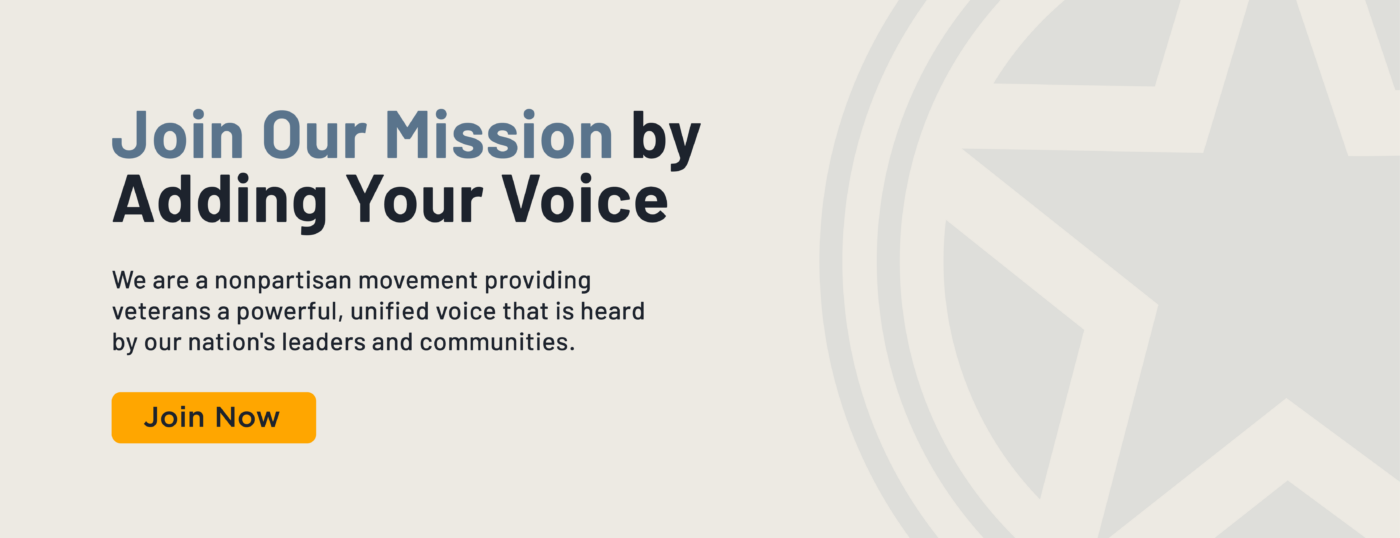Introduction
As we celebrate Women’s History Month, we honor the unsung heroes of national service who have been breaking barriers and challenging limitations with extraordinary resilience and determination. For more than a hundred years, women have stepped forward from the coded communications of Native American cryptologists to the critical medical care provided by African American nurses, from the strategic intelligence of OSS operatives to the pioneering aviation of WASPs. Women have consistently demonstrated their unwavering commitment to serving their country in profound and transformative ways. Long before they were officially recognized, women have been integral to national progress, stepping forward in times of war and peace – and reshaping the very definition of patriotism and service along the way.
1. Tribal women who served as code talkers.
World War II saw the Allied forces achieve victory through various strategic advantages – and code talkers were a key strategy. Code talkers were American Indians who utilized their tribal language to establish secure battlefield communications. Code talkers were initially tested in World War I with groups such as the Choctaw Telephone Squad, but were not put into full effect until World War II.
In 1940, the U.S. Army began recruiting Native Americans, primarily from Oklahoma and surrounding areas, to train in code talking. This consisted of years of training and the development of two types of code talking. Type 1 Code consisted of 26 Navajo terms that represented English letters. For example, the Navajo word “wo-la-chee,” meaning “ant,” represented the letter ‘a’. These Navajo words were then combined to form sentences, which were subsequently decoded into English. Type 2 Code contained 211 words that were able to be directly translated from English to Navajo, and vice versa. These words were military-specific, such as “submarine” being called “besh-lo” in Navajo, which translates to “iron fish” in English. The 211-word vocabulary evolved to 411 words by the end of the war.
By 1942, the first class of Marine code talker recruits had completed their training. Code talkers typically worked in pairs, with one operating a portable radio and the other translating between Navajo and English. This strategy proved highly effective against Japan, with over 800 messages being transmitted using this code. Notably, fifty percent of these transmissions were flawlessly coded by a single individual: Winnie Breegle.
Winnie Breegle served as a WAVE (Women Accepted for Volunteer Emergency Service) cryptographer and code talker during World War II. Fluent in English, Latin, and Spanish, she also mastered the Navajo code talker language while serving in the Navy. Winnie served for five years and has since been recognized, along with her fellow code talkers, for having unparalleled value in winning World War II. Despite their vital contribution, code talkers were sworn to secrecy after V-J Day, in case their unbreakable code was needed in future conflicts. Although the program was declassified in 1968, Congressional Gold Medals were not awarded to the code talkers until 2001.
2. African American nurses or members of the Women’s Army Corps during segregated military service.
African American nurses like Della Hayden Raney – a six-time military award recipient and the first African American woman to be promoted to captain – made nursing and military history by serving the U.S. with distinction during segregated military service.
The U.S. Army Nurse Corps (ANC) became part of the Army Medical Department in 1901 to aid ill and injured soldiers. By 1918, the ANC had 21,460 nurses, though only a few African American nurses were allowed to serve. Despite over 1,800 African American nurses being qualified to serve in the ANC, only 18 were accepted at the end of World War I to treat victims of the Spanish Flu pandemic. Eight months after their service began, the women were discharged and barred from service for 22 years.
When the start of World War II inspired Black women to volunteer in the ANC, they were initially blocked from entry due to segregation. However, the National Association of Colored Graduate Nurses pushed against racial discrimination and a quota of 56 – later increased to 500 – African American nurses were allowed to serve in World War II. Still, the nurses were sent to segregated bases under the condition that they were only allowed to aid injured African American soldiers or German prisoners of war.
Della Hayden Raney was the first African American woman to join the ANC during World War II, ending the 22-year block on women of color serving in the ANC. Raney was also the first African American woman to receive a commission from the Army. She stood as second lieutenant in 1941 and a year later, became the first African American woman to be promoted to first lieutenant. She also became the first African American chief nurse and made history again when promoted to captain in 1944 and major in 1946. These brave women paved the way for the ANC and for Black women’s role in our military efforts. Since 1918, millions of Black women have served in all branches of the military, overcoming barriers and discrimination to serve their country.
3. SPARs
On November 23rd, 1942, the U.S. Coast Guard established its women’s reserve, known as SPARs. The name “SPAR” is derived from the Coast Guard’s motto, “Semper Paratus, Always Ready.” This vital reserve comprised 10,000 dedicated women volunteers who served their country during World War II, filling crucial roles as men were called to active duty.
The creation of SPARs was driven by necessity. As more men were called to active duty, women stepped forward to fill essential roles. The duties performed by these women in the military were diverse and included “officers, seamen, clerical workers, logistics specialists, photographers, parachute riggers, air traffic controllers, and radio operators.” The establishment of SPARs, signed into effect by President Franklin D. Roosevelt, served a dual-purpose: it provided crucial support to the country during wartime and represented a significant step in recognizing women’s right to participate directly in the armed services. This recognition helped pave the way for future generations of women to join the military and pursue careers in fields traditionally dominated by men.
A particularly important figure in the SPARs effort was Captain Dorothy Stratton. Prior to 1942, Dorothy had an esteemed career as the Dean of Women at Purdue University for nine years. However, when the call came, she took a leave of absence to join the WAVEs (United States Naval Women’s Reserves). Her leadership qualities were quickly recognized, and within a year, she was selected to direct the U.S. Coast Guard Women’s Reserves. Dorothy played a critical role in organizing and managing the recruitment, training, and integration of over 10,000 women into the military through SPARs during the war. She was instrumental in breaking gender barriers, demonstrating women’s capability in military service, and paving the way for future generations of women in the armed forces.
SPARS was disbanded six months following the end of the war. However, the progress made in women’s military service held steadfast. In 1948, President Harry S. Truman signed the Women’s Armed Services Integration Act, which allowed women to serve as permanent members of the U.S. military. While the Coast Guard was initially not included in this act due to its distinct organizational structure, they followed suit in 1949 and revised their policies to allow women to serve. Finally, in 1973, Congress amended the rules to ensure Coast Guard women could serve alongside men on fully equal terms.
4. Women in the OSS
In 1942, President Franklin Roosevelt established the Office of Strategic Services (OSS). The OSS was composed of 13,000 men and women who were selected based on their skills, aptitude, bravery, ruthlessness and creativity. Of the 13,000 OSS members, 4,500 were women, with backgrounds ranging anywhere from graduate students and teachers to socialites and lawyers. These women put themselves in harm’s way to engage in counterintelligence and create propaganda to help fight against enemy forces.
Julia Child, well-known for bringing French cuisine to America, had origins in the OSS as a research assistant tasked with developing shark repellent for sailors and airmen conducting missions in shark-infested waters. However, women of the OSS did all sorts of jobs that put themselves at risk for their country. For instance, Gertrude Sanford Legendre, a young female socialite and from a wealthy family, became the first female American prisoner of war (POW) because of her relationship to the OSS. Alongside two OSS officers, Legendre was trapped by sniper fire near the Luxembourg border and captured by the Germans for six months. Legendre refused to give up her true identity – and only escaped by jumping off of a moving train and running into a nearby forest.
Female OSS members were also instrumental in key war operations such as Operation Sauerkraut. Operation Sauerkraut was a series of secret missions that used German POWs to disperse propaganda during 1944 to 1945. Many women were involved in the mission, such as multilingual journalist Barbara Lauwers who interviewed German and Czech POWs during the operation. Lauwers also devised propaganda that convinced nearly 600 Czech and Slovak soldiers to surrender to the Allies – with many of them carrying her leaflet propaganda in their pockets. In 1945, Lauwers received a Bronze Star for the success of this operation.
Although the OSS only lasted for three years, it served as the basis for the CIA. Some of the OSS women, such as Marion Frieswyk who became the first female intelligence cartographer, went on to work for the CIA after the war. The OSS women have several books written about them, detailing their bravery and efforts in assisting resistance behind enemy lines.
5. WASPs
During the height of World War II, the Women Airforce Service Pilots (WASP) were formed to free men for combat. The idea for the formation of the WASPs was proposed by Jacqueline Cochran, a pioneer in women’s aviation. She went on to serve as director of the WASPs from August 1943 to December 1944.
Over the course of 27 weeks, 1,830 women learned to fly planes and trained in navigation, physics, Morse code, meteorology, military law, and mechanics. A total of 1,074 women graduated and engaged in non-combat missions such as ferrying new and damaged planes, testing aircraft with suspected mechanical issues, and towing practice targets for anti-aircraft gunners. By the end of the war, the WASPs had flown 77 different military aircraft – including B-25 bombers and Navy A-24 attack planes – and ferried thousands of planes across 126 bases.
There were 38 WASP fatalities during the war, but because the WASPs were considered a “civilian group,” there were no flags on their caskets, no service flags on their windows and their families had to pay for their funerals. Everything from uniforms to room and board was paid for by the WASPs, and they resorted to passing around a hat to raise money for their deceased sisters and escorting each of them home. When the war ended, Cohran proposed that the WASPs be disbanded if they were not militarized, and so they were.
Many people never knew what the WASPs did for their country. The women did not get recognition for their service or receive veteran benefits until 30 years later. Byrd Howell Granger, former WASP commanding officer, compiled a document entitled “Evidences of Military Service of Women Air Force Service Pilots of World War II,” containing more than 100 pages of flight logs, accident reports and proof that they underwent military training and were assigned top secret missions. Granger’s efforts played a major role in the WASP’s militarization and finally, in 1977, President Jimmy Carter signed H.R. 8701 into law, giving the WASPs the veteran status they so valiantly earned.
6. Rosie the riveter
“We Can Do It!” Rosie the Riveter stands as one of the most iconic and influential figures in American history, inspiring millions of women to enter the workforce during World War II.
Originally conceived by J. Howard Miller in 1942, Rosie the Riveter was a fictional female character who encouraged women to work in manufacturing jobs on the home front while men who previously held those jobs were away fighting the war. The most recognizable image portrays Rosie in a red bandana with her sleeves rolled up in a denim jumpsuit, set against a vibrant yellow background, with the empowering text bubble proclaiming, “We Can Do It!” This strong imagery conveyed a powerful message: women were just as capable as men in performing skilled labor.
The campaign proved remarkably effective, helping recruit over two million women in the workforce. It spurred female entry into a variety of critical industries, including factory work, shipbuilding, engineering, mechanics, and aviation manufacturing– making up 65% of the aviation industry’s total workforce, compared to just 1% in the pre-war years. Not only did the increase of women in these fields boost the production of war materials and stabilize the economy, but also marked a major step forward for gender equality, both during and after the war.
Rosie the Riveter played a vital role in dismantling pre-existing gender norms by demonstrating that women could successfully hold the same jobs and societal responsibilities as men. Additionally, women gained newfound financial independence and self-confidence in their strength, intelligence, and technical skills. Internal and external perceptions of women improved drastically during the war.
As the soldiers returned home following the end of the war, many women remained in these wartime careers, which allowed for men to pursue education through the newly enacted GI Bill. Although the explicit push for women in the workforce diminished somewhat following the war, the effects were long-lasting. Rosie the Riveter became an enduring symbol of women’s strength, resilience, and capability. She continues to inspire future generations of women to pursue careers in traditionally male-dominated fields like engineering, science, and technology.
Conclusion
The story of women’s service is not just a historical narrative but a continuing legacy of courage, innovation and dedication. Each generation of women builds upon the groundwork laid by their predecessors, expanding possibilities and creating pathways for those who will follow. Their service transcends uniforms and titles – it is a testament to the fundamental truth that commitment to one’s country knows no gender. As we reflect on over a century of contributions, we are reminded that true national strength is not about limitations, but about the boundless potential of individuals who are willing to serve, sacrifice and lead, regardless of the obstacles they face.
For many young Americans, higher education is a cornerstone of their future, but for those who choose to serve in the military, that path often takes a detour. Nearly 40% of active-duty service members are 25 or younger—the prime age for pursuing college degrees. For these individuals, the GI Bill serves as a bridge to education, helping them transition from military service to civilian life.
Created to support U.S. military veterans, the GI Bill provides assistance for tuition, housing, and fees, as well as access to low-interest home loans, unemployment benefits, and vocational rehabilitation for those with service-connected disabilities. The bill promotes financial growth for individual veterans as well as economic stability for the country as a whole.
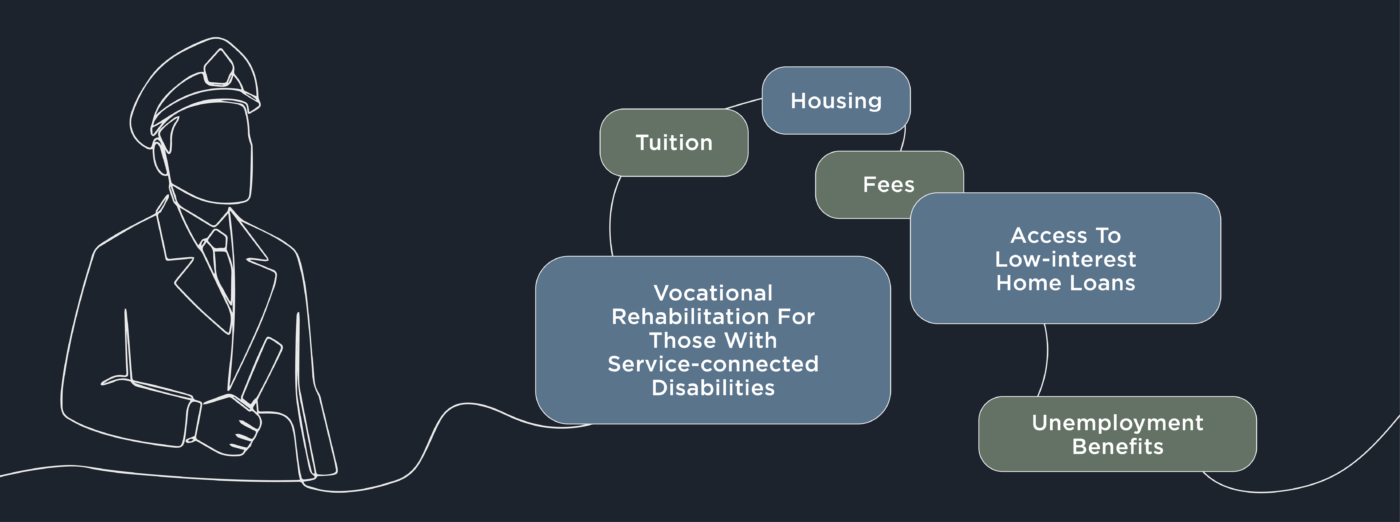
Since its inception during World War II, the GI Bill has been amended several times to meet the changing needs of veterans. The most substantial changes were the Montgomery GI Bill, the Post-9/11 GI Bill, and, most recently, the Rudisill v. McDonough Supreme Court ruling.
This article will cover the history and transformation of the GI Bill, the 2025 expansion and implications, and practical tips for accessing and benefitting from the updated GI Bill.
History of the GI Bill
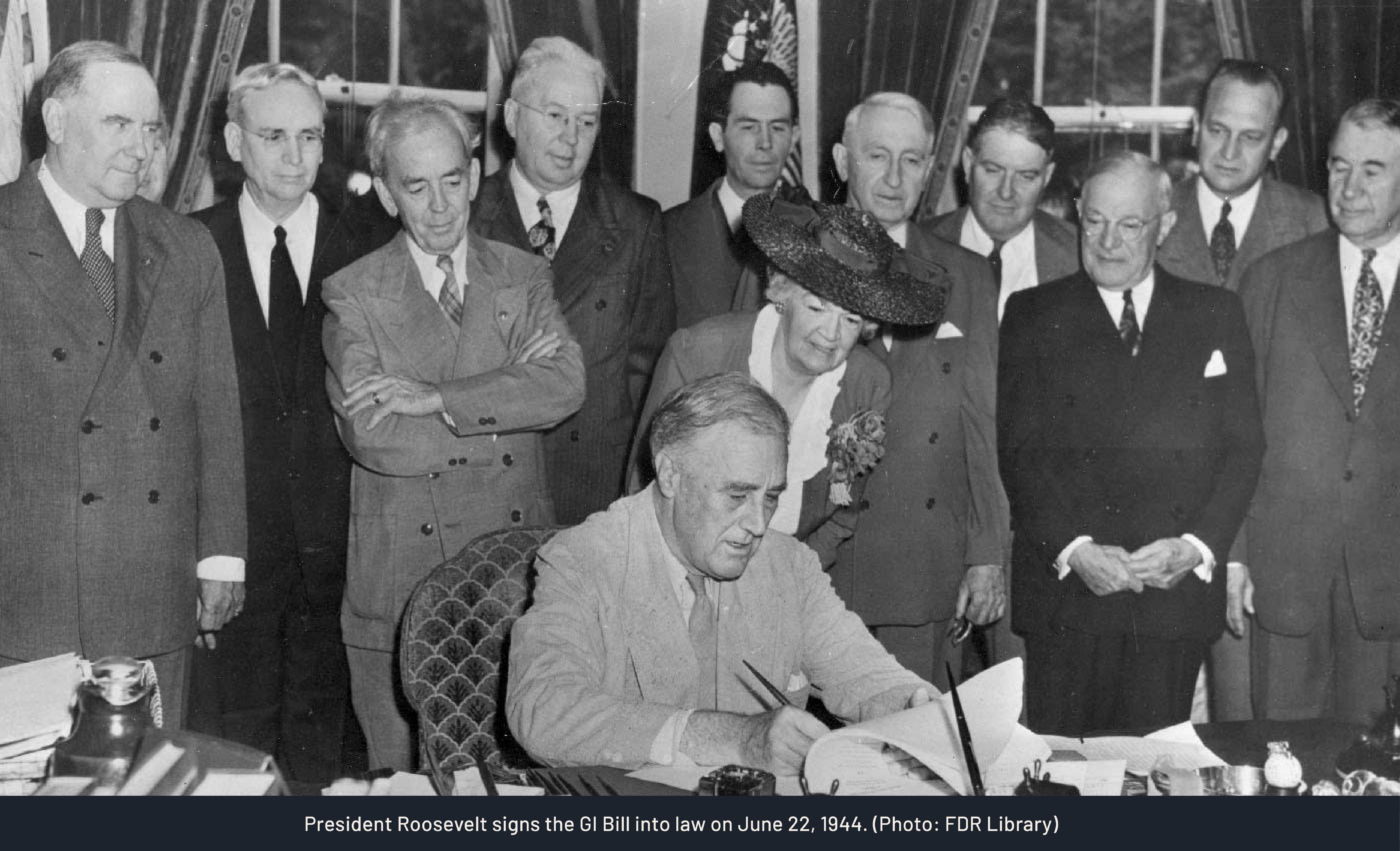
In 1944, President Franklin D. Roosevelt signed the Servicemen’s Readjustment Act—better known as the GI Bill. The bill provided World War II veterans with funds for college education, vocational training, unemployment assistance, and housing loans. At the end of the war, 15 million servicemen returned home to an uncertain economy and faced potential unemployment. Roosevelt’s bill was designed to boost the economy and reduce the chances of another nationwide depression—and it was successful: The GI Bill became a catalyst for economic growth, enabling millions of veterans to pursue higher education and homeownership. Within the next decade, economic growth, social mobility, and access to advanced learning flourished.
The GI Bill positively impacted U.S. institutions and structures and directly aided veterans and their families by providing opportunities for employment and education. The return to civilian life for veterans is often difficult due to lack of housing and interruptions in education. As a consequence, veterans often encounter difficulties obtaining a well-paying job. The GI Bill was intended to improve veterans’ financial stability and help overcome these difficult challenges of returning to civilian life.
The GI Bill proved successful. Within seven years of enactment, approximately 8 million veterans attended college and/or received training. Since its inception, over 25 million veterans have benefited from the GI Bill. Under the act, approximately 2.3 million attended college, 3.5 million received school training, and 3.4 million received on-the-job training.
Key Developments
The GI Bill has been modified and improved several times since its inception, with the most recent change in 2025 expanding benefits for veterans and their families.
The Korean War GI Bill was passed eight years following the original passage of the GI Bill. This gave veterans of the Korean War access to the same benefits World War II veterans received through the original bill. About 2.4 million Korean War veterans received education and training under the Korean War GI Bill– also known as the Veterans Readjustment Assistance Act of 1952. Of these, 1.2 million received training in institutions of higher learning; 860,000 were trained in other schools; 223,000 received on-the-job training; and 95,000 received institutional on-farm training.
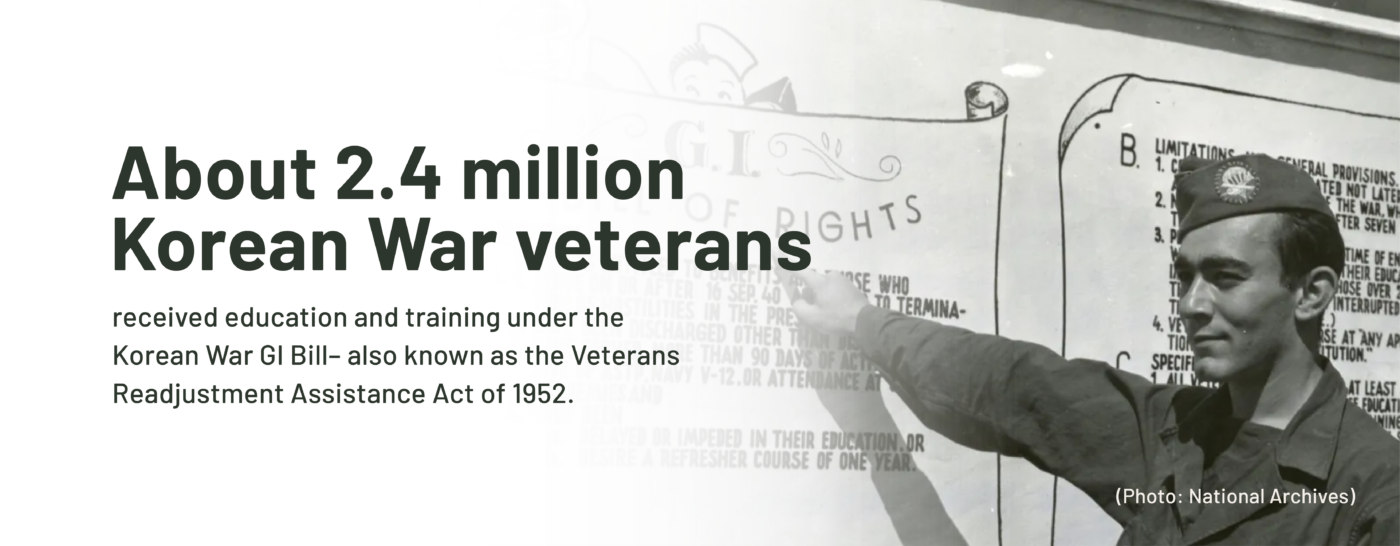
The Korean War GI Bill was followed by the Vietnam Era GI Bill (VEGIB) which granted eligibility to those who served on active duty after November 1955 and prior to January 1977. Directly after came the Veterans’ Education Assistance Program (VEAP), which allotted benefits for those who served on active duty from January 1977 to June 1985 provided they contributed a monthly payment that was matched for an education benefit.
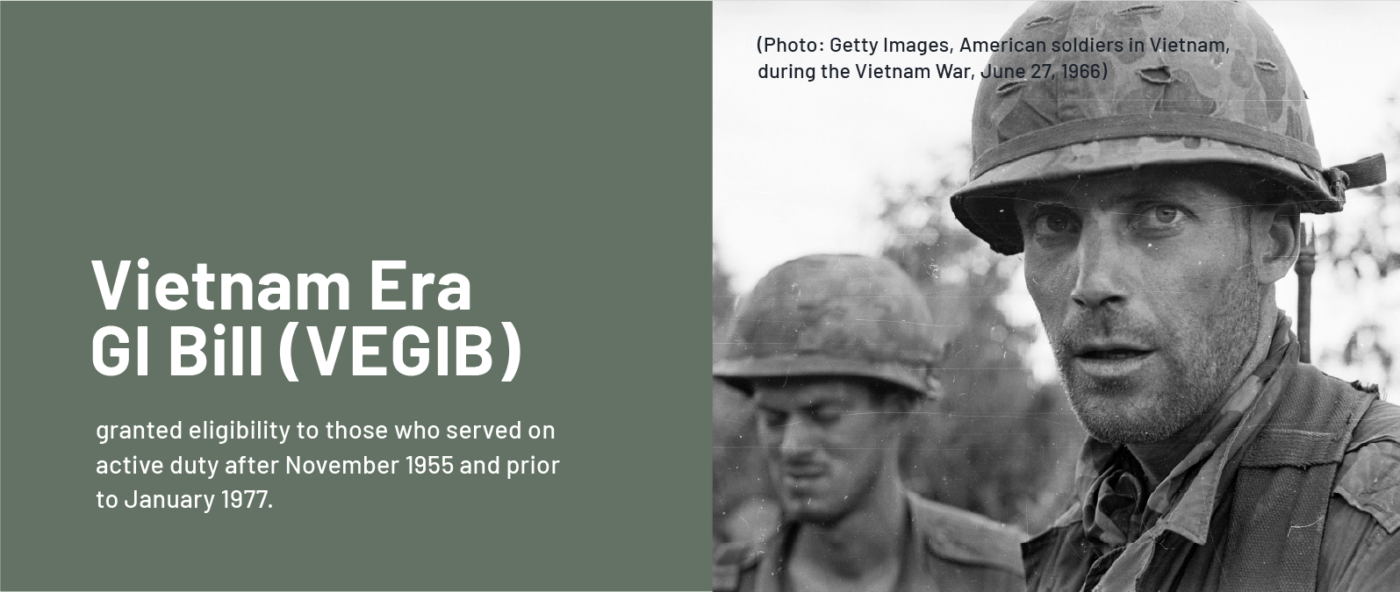
In June of 1984, Congress launched a test program called the Montgomery GI Bill. Eligibility for the program “required a monthly pay reduction for active duty personnel during the first 12 months of active duty; reservists received reduced benefits for no pay reduction.” In June of 1987, the Montgomery GI Bill (MGIB) was made permanent. Similar to the GI Bill of 1944, the Montgomery GI Bill’s educational assistance program, known as Chapter 30, was intended to ease the service member’s readjustment to civilian life. It also served as an incentive for recruitment and retention for the Armed Forces. Eligible individuals contributed $100 per month for the first 12 months of service. Additional monthly benefits, known as “kickers,” were available in certain service branches as an incentive to enhance recruitment in “hard-to-fill” areas. The Montgomery GI Bill was in place until 2008, when it was replaced by the Post-9/11 GI Bill.
The Post-9/11 GI Bill provides educational benefits for those who served active duty or the Selected Reserve for 90 or more days after Sep. 10, 2001. The new bill pays up to full tuition for a college degree, in contrast to the monthly, fixed stipend available through the Montgomery GI Bill. It also provides students with a monthly housing allowance based on the cost of living in the location of the school. One of its highlights is that it allows eligible service members to transfer their unused benefits to family members. While the MGIB required service members to opt in through payments, the Post-9/11 GI Bill is automatically available to veterans who meet eligibility requirements.
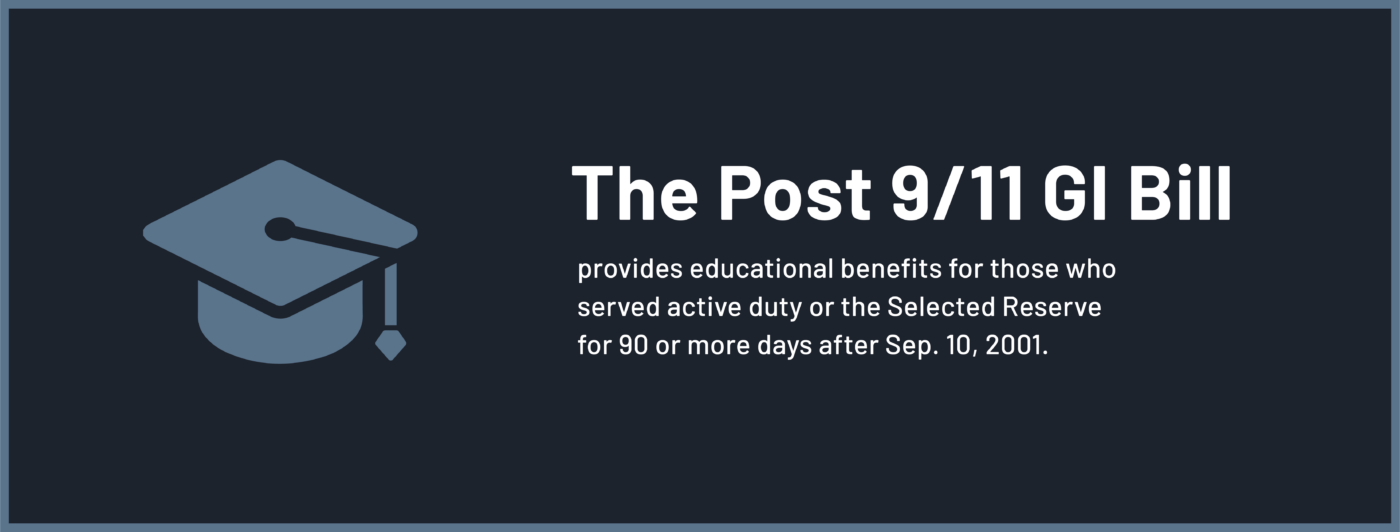
Despite the continual progression of the GI Bill, these bills are not without challenges and limitations. Veterans have voiced several issues with many of the varying frameworks of the GI Bill, namely insufficient fund coverage, limited time to use the respective benefits, access difficulty, gaps in support for certain military groups, and lack of modernization. James Rudisill was one of the veterans affected by this bill’s shortcomings, which ultimately led to the 2024 Supreme Court Case: Rudisill v. McDonough.
The Supreme Court Case: Rudisill v McDonough (22-888)
In November of 2023, U.S. Army veteran James Rudisill presented a case concerning two GI Bills with overlapping service periods—the MGIB and the PGIB. Over the course of eight years, Rudisill served three separate times, earning educational benefits for both programs. Typically, the GI Bills would provide 36 months of educational benefits each or 48 months total in cases similar to Rudisill’s where service members are eligible for benefits under more than one GI Bill.
Initially, Rudisill used 25 months and 14 days of his MGIB benefits to finance earning an undergraduate degree. Shortly afterward, Rudisill became eligible for more generous benefits under the PGIB and sought to use those benefits to finance a graduate degree. Under the 48-month benefits cap, Rudisill should have had more than 22 months available for use. Yet, the Department of Veterans Affairs (VA) informed him that he could only use 10 months of the PGIB benefits (equivalent to the length of his unused MGIB benefits) due to a “benefit swap” provision.
Furthermore, the VA claimed that someone in Rudisill’s position is subject to a mandatory coordination clause, in which one must make an election between the two programs, limiting him to 36 months total. Rudisill countered that his years of service qualified him for both programs fully, up to the 48-month cap set by law.
Ultimately, on April 16, 2024, the court ruled in favor of Rudisill (7-2), deciding that veterans who earn benefits under the MGIB and PGIB through separate service periods can use both benefits in any order, up to the 48-month limit. Despite the VA’s claims, the Court found that the law does not force veterans to “swap” their benefits and that Rudisill was indeed entitled to the full 48 months.
The decision set an important precedent for how the VA handles GI Bill benefits, allowing veterans with multiple service periods to fully access educational benefits they’ve earned under both programs, separately. The ruling strengthens veterans’ rights by making it easier to pursue higher education and ensuring fair access to the support they were promised.
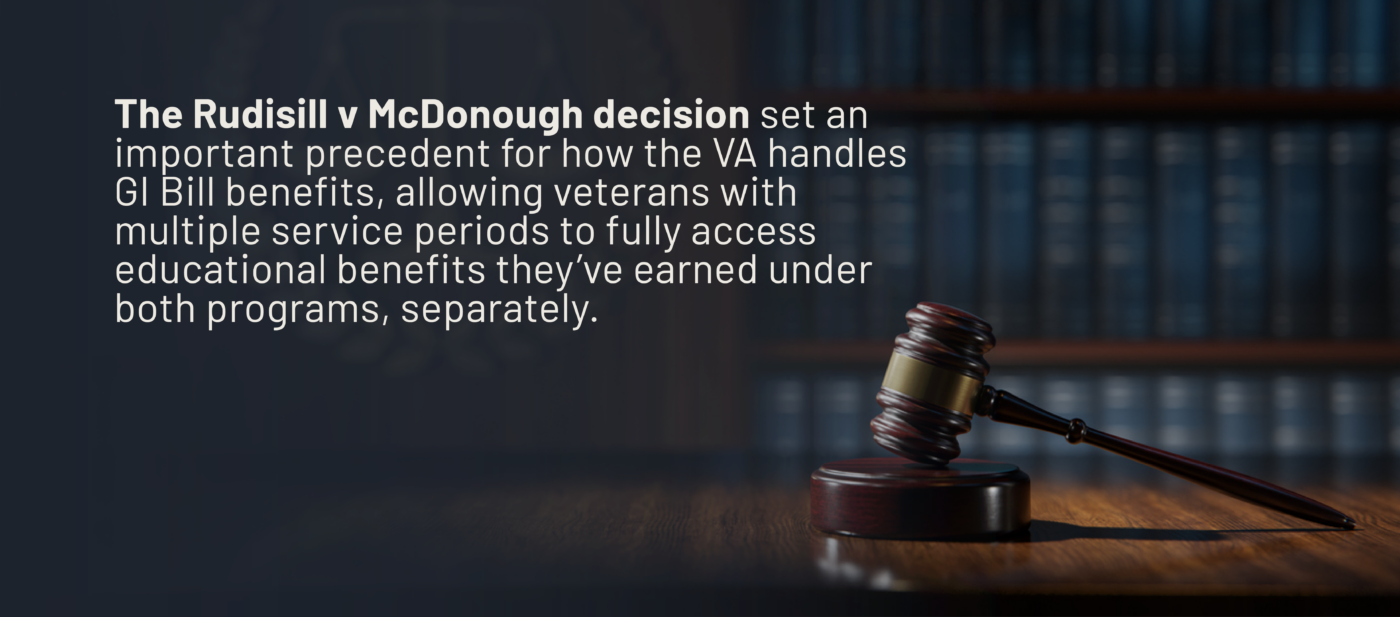
Implications of the Supreme Court Ruling
Following the 2024 Supreme Court decision, the VA announced an updated process for awarding GI Bill benefits, effective January 2025. Most notably, veterans who qualify for both the MGIB and PGIB are no longer required to waive one program’s benefits to access the other. Veterans can now receive up to 48 months of combined benefits, removing the previous 36-month limit between the two programs.
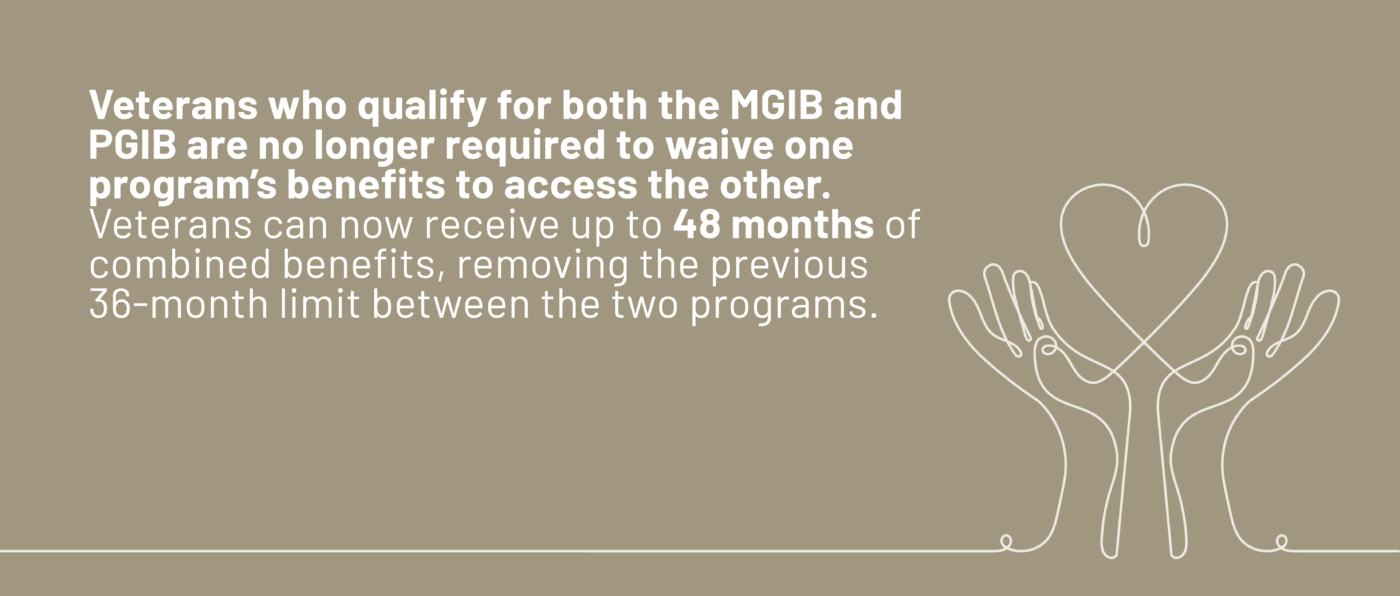
Many veterans, like those in the Rudisill case, have served multiple periods of military service, qualifying them for both MGIB and PGIB. With these restrictions lifted, eligible veterans and their families can now access up to 12 additional months of GI Bill benefits, totaling 48 months. This change could impact up to 1.04 million veterans and beneficiaries, ensuring they fully receive the benefits they and their families deserve.
What the 2025 GI Bill Changes Mean
In addition to greater flexibility, these GI Bill updates significantly expand educational opportunities and housing allowances for veterans. By no longer needing to waive MGIB benefits to use PGIB benefits, veterans can now fully utilize both programs. This additional year of benefits offers more financial support for education, further aiding veterans as they pursue successful professional careers following their years of service. While the 48-month combined usage cap remains, veterans now have access to four full years of educational funding.
Moreover, veterans currently or formerly participating in the Veteran Readiness & Employee (VR&E) program on or after August 15, 2018, have been granted new access to PGIB benefits. Previously, these veterans were forced to choose between the standard Chapter 31 Subsistence Allowance and the PGIB housing rate. Now, many of those veterans will be granted PGIB benefits retroactively, allowing them to qualify for Basic Allowance for Housing (BAH), which often provides higher rates than Chapter 31.
These changes also extend benefits to veteran families through existing transfer of entitlement requirements. Veterans who receive authority from the Department of Defense to transfer GI Bill benefits to their spouse, dependents, or survivors, will remain eligible to do so under the new changes to the GI Bill.
Dependents can therefore access funding to cover educational necessities such as tuition, housing, books and supplies, fees for standardized testing, and more. Veterans may transfer up to 36 months of their remaining education benefits to their dependents. Additionally, the GI Bill offers veterans the option to split their benefits among multiple dependents, provided they transfer the benefits while actively serving. Qualifying dependents receive a myriad of benefits, largely based on the related veteran’s length of active duty service.
These include:
- Tuition and Fee Assistance – Depending on the type of school (public, private, foreign, etc), veterans and their dependents may be entitled to up to $28,937.09 per academic year. In some cases, veterans may be eligible for additional payments to cover the remainder of tuition costs through the Yellow Ribbon Program.
- Monthly Housing Allowances – At the end of each month, the VA will provide money to cover housing expenses for dependents who are studying more than half-time.
- Books and Supplies Stipend – The VA provides up to $1000 to cover books and supplies per academic year, paid at the beginning of each enrollment period.
- Relocation Assistance – Veterans and/or dependents in highly rural areas may qualify for a one-time payment of $500 to help cover moving expenses.
- Tutorial Assistance – Veterans and their dependents may be eligible for up to $100 per month in tutorial assistance, with a lifetime maximum of $1,200.
- On-the-Job Training and Apprenticeship Programs – Veterans enrolled in a school or professional training program may earn additional income through part-time VA-related work or apprenticeships.
- Test Fees and Prep Courses – The VA covers up to $2,000 for qualifying licensing and certification test fees. Fees for courses that prepare veterans for these tests are also eligible, with charges to entitlement based on specific rates. There is no limit on reimbursement for national test fees.
Additionally, in the case that a veteran passes away or becomes permanently disabled due to service-related conditions, surviving spouses and dependents may qualify for additional education assistance under the Survivors’ and Dependents’ Educational Assistance (DEA) program and/or the Fry Scholarship.
For a veteran to be eligible for a transfer of benefits, they must meet the following: completed six years of service on the date of approved request, agree to four more years of service, and the person receiving benefits is enrolled in the Defense Enrollment Eligibility Reporting System (DEERS). If they separate from service for any of the following reasons, their dependents may still be eligible to receive their transferred benefits: injury, sickness, hardship discharge, disability, reduction in force, or death. Other reasons for separation will result in the dependents’ loss of eligibility for transferred benefits. Purple Heart recipients do not need to meet all the requirements but must make their request to transfer benefits while still on active duty.
For more information on transferring your benefits, visit va.gov.
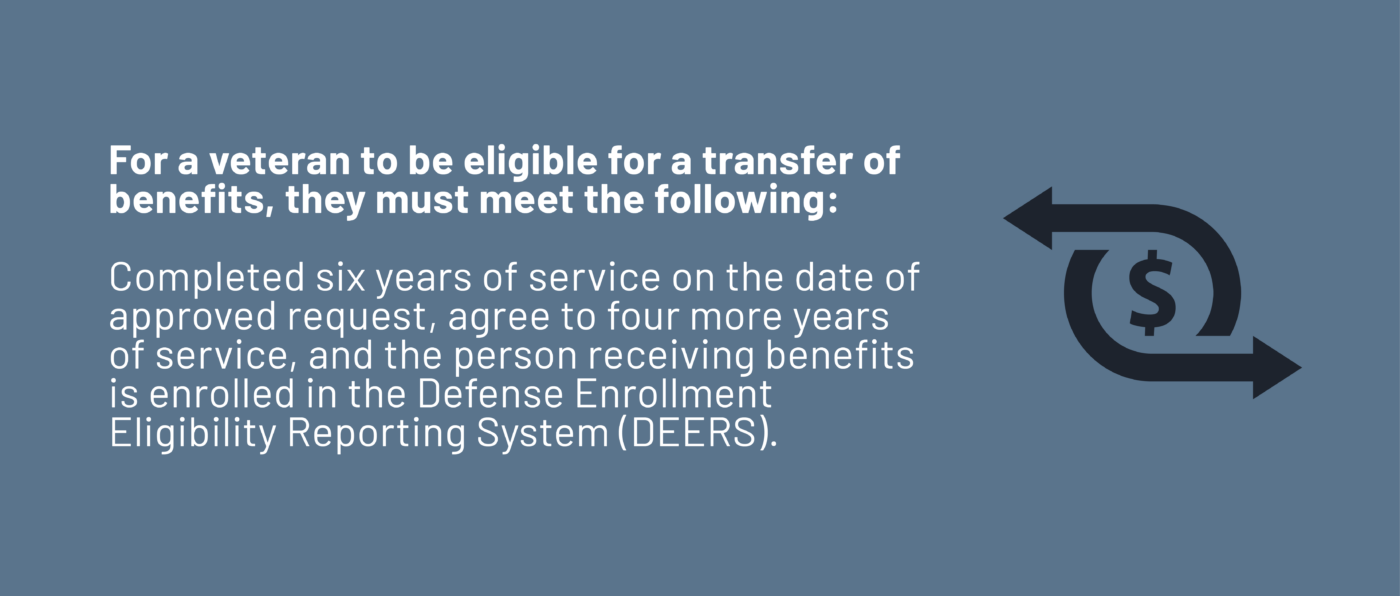
How to Access and Benefit from the Updated GI Bill
Navigating the GI Bill can feel overwhelming, but understanding the steps is crucial. Those who may be eligible for the Montgomery GI Bill or the Post-9/11 GI Bill can check their eligibility on the VA’s GI Bill’s Eligibility page.
Once established, those eligible need to then go to the VA’s online portal and complete VA Form 22-1990, “Application for VA Education Benefits,” and provide necessary documentation, such as the DD Form 214. The VA will review the application to confirm eligibility and issue a decision.
Following submission of their application, veterans can check their status at the VA’s eBenefits portal. This portal will allow veterans to stay current on their application, their granted benefits, and their payment history. Once the VA approves a GI Bill application, they issue a Certificate of Eligibility (COE) that details the type of benefit, the amount of entitlement, and the eligibility period. Veterans can then present their COE to their educational institution to transfer their benefits. If their COE is misplaced or lost, they can acquire a duplicate through the VA eBenefits portal.
To make the most of these benefits, veterans should explore resources like VA support services and educational counseling. Careful planning can help maximize opportunities, whether pursuing a degree, vocational training, or other educational goals. Through informed educational program selections and effective use of housing allowances, veterans can maximize their benefits to ensure they cover their professional and academic needs. The VA support services and other educational counseling resources are designed to assist veterans in navigating the benefits process and making informed decisions.
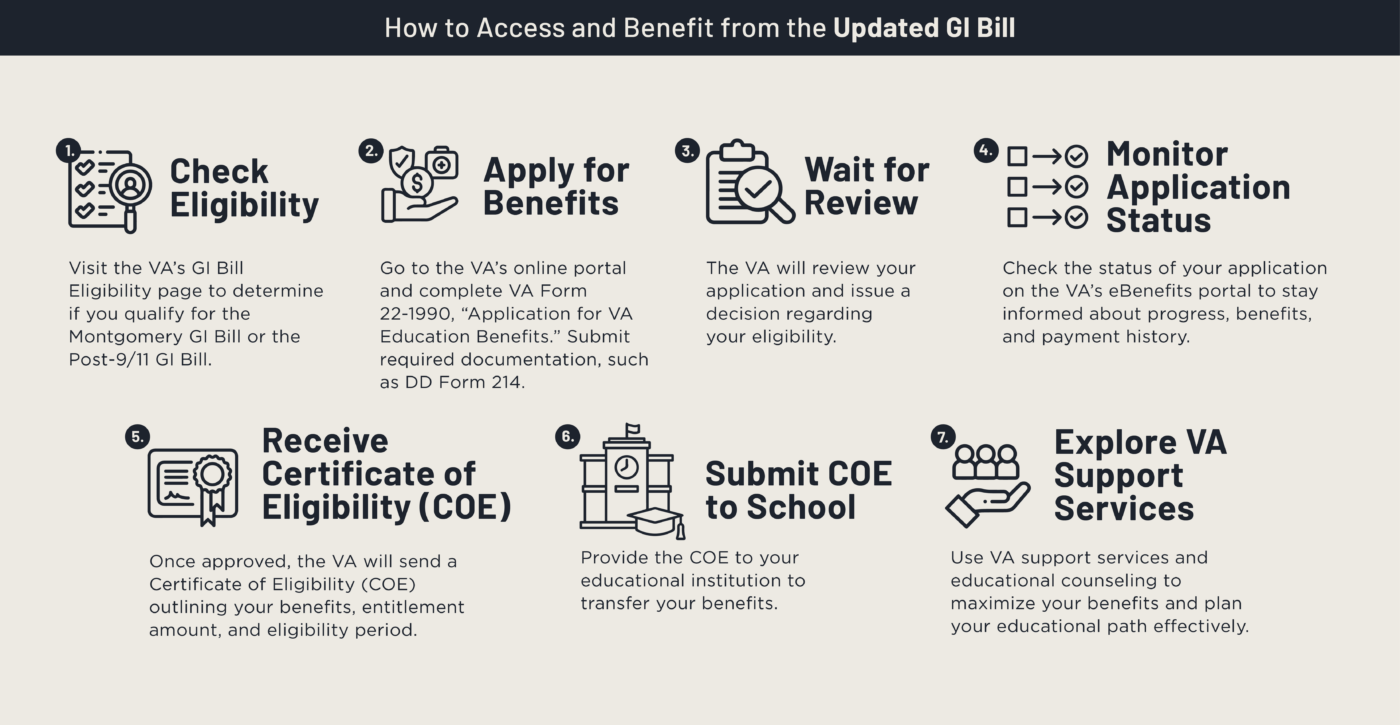
Conclusion
The GI Bill has transformed countless lives since its creation, and its latest updates promise even greater opportunities for veterans and their families. Understanding its history—particularly the most recent changes—is essential for veterans, service members, and their families to fully access the educational benefits they have earned. Staying informed empowers veterans to make strategic decisions about their education and future career paths. By being proactive, veterans can unlock the full potential of these benefits, securing brighter futures for themselves and their loved ones.
To learn more about the resources available to veterans, including other GI Bill-related content, visit Mission Roll Call’s website or check out our educational videos on the Mission Roll Call University YouTube page.
A lot happened in 2024: Americans elected a new president, cheered on their athletes in the Paris Olympics, and parts of the country grappled with major hurricanes and natural disasters. These events stirred a wide range of emotions from excitement to disappointment, hope to uncertainty – but above all, unity.
Much happened for veterans this year as well. Veterans and their families navigated a complex and evolving landscape, marked by progress and setbacks on policy issues, while navigating shifts in mental and physical health, the transition to civilian life, employment and job retention, finances, and more. This article will provide a comprehensive look at the state of veterans in 2024, reflecting on the progress and hindrances of the past year, while identifying key needs and opportunities as we look toward the future.
Mission Roll Call is dedicated to identifying critical areas where veterans need support and advocating on behalf of American veterans and their families to lawmakers. Through our “State of” research articles, we spotlight areas that are positively and negatively impacting the veteran community and paint a path forward. In 2024, we have detailed the State of Veteran Suicide, Veteran Post Traumatic Stress, Veteran Homelessness, Rural and Tribal Veterans, Veteran Mental Health, and Military Families.
As we approach the end of 2024, we want to reflect on the successes that lawmakers and organizations have had in fighting for veterans, as well as the challenges and priorities that remain ahead in 2025 and beyond. This article will explore the important work that veterans, volunteers, advocates and policymakers not just at Mission Roll Call, but nationwide, are doing for the benefit of all veterans and their families.
The State of Veterans Health & Wellness
Veterans face many hardships after their time in service – and for many, chronic physical ailments and pain are among them. Recent data shows veterans have reported nearly twice as much back and neck pain than nonveterans. Musculoskeletal disorders, traumatic brain injuries, and chronic fatigue syndrome were also found to be three to six times higher in veterans than nonveterans. Veterans not only experience chronic pain at a greater rate than the general population, but managing this pain is made more challenging by the barriers to VA healthcare – such as eligibility requirements, heightened wait times, and far travel in rural areas.

However, veteran health and wellness extend beyond physical disabilities and pain. The disproportionate rate of mental health issues among veterans is well-documented, including higher than average rates of depression, post-traumatic stress (PTS), substance abuse disorders (SUDs), traumatic brain injuries (TBIs), anxiety and insomnia. Following the Global War on Terror (GWOT), 15% of all military personnel who served in Iraq or Afghanistan experience post-traumatic stress each year.
The latest data shows that 38% of veterans had a code on their medical record for a common mental health disorder. This number does not include undiagnosed mental health conditions, which means the actual number is likely much higher especially due to the stigma around seeking mental health care in the military. These issues are an unfortunate result of the unique challenges and trauma some veterans face during and after military service.
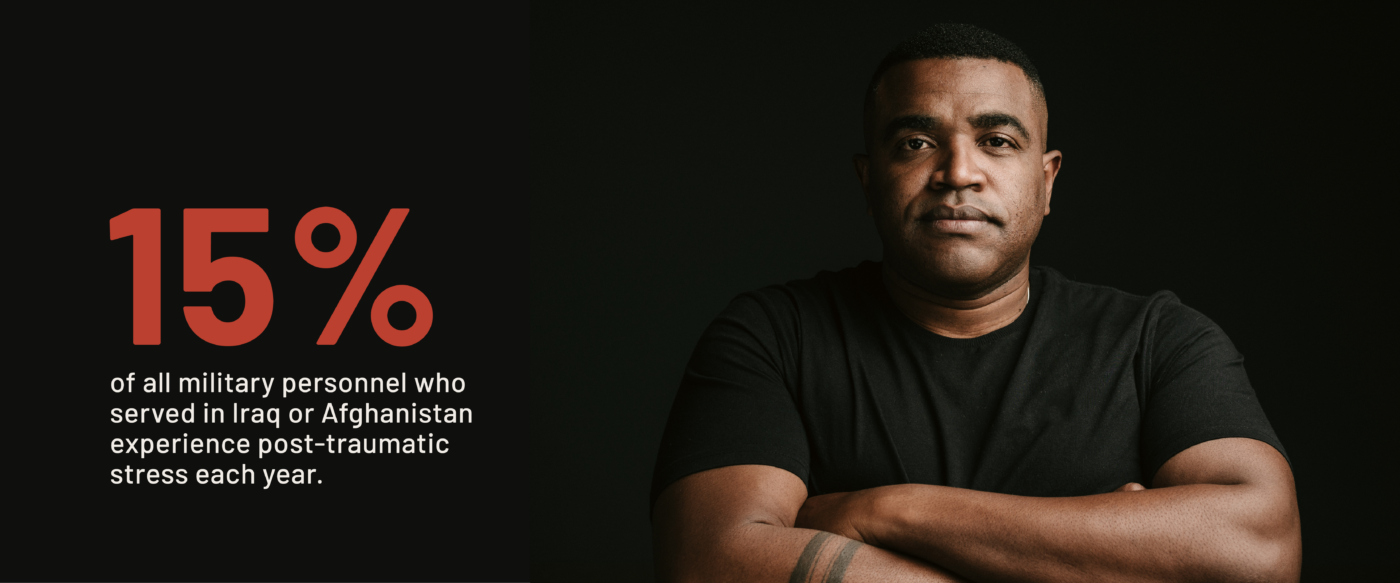
Promisingly, the Department of Veterans Affairs (VA) and other organizations have made strides this year in securing better physical and mental healthcare resources for the veteran community. Earlier this year, the PACT Act ensured that veterans who were exposed to toxins or hazards while serving in the military are eligible to enroll in VA healthcare without first applying for benefits. This includes veterans who served in the Vietnam War, the Gulf War, Iraq, Afghanistan, the Global War on Terror, or any other combat zone after 9/11. Additionally, the VA has taken strides in recent months to provide faster, simpler access to residential treatment through a centralized screening process for mental health residential rehabilitation treatment programs (RRTPs).
Organizations are also beginning to invest in innovative research, such as the DoD and VA studying the potential benefits of psychedelics to treat PTS and depression. Additionally, other organizations diligently coordinate efforts to connect veterans with resources and support. For instance, America’s Warrior Partnership has social workers who man a 24/7 support line, specializing in connecting veterans and their families with a range of services that go far beyond mental health care. From helping veterans navigate the often complex VA system to ensuring their basic needs are met, AWP is working to build a safety net that addresses every aspect of a veteran’s life.

These developments, alongside other recent policies such as the Hannon Act and Fox Grant, represent meaningful strides for veteran healthcare and mental health treatment. The continued advocacy of citizens, veterans, and organizations such as Mission Roll Call has enabled us to make this progress and will be necessary going into 2025.
Financial Stability and Economic Opportunities
After their service, many veterans face challenges in finding employment due to a lack of resources, difficulties in translating military skills to civilian jobs, and the emotional toll of reintegration. A poll conducted by Mission Roll Call earlier this year found that only 15% of veterans felt that the military’s transition assistance program adequately prepared them for entering the civilian workspace. As of this October, the veteran unemployment rate was up to 3%, increasing from 2.8% the previous month and up from 2.9% the prior year. In addition, a 2022 survey from the Wounded Warrior Project found 64% of polled veterans “reported that they did not have enough money to make ends meet at some point in the past 12 months.”
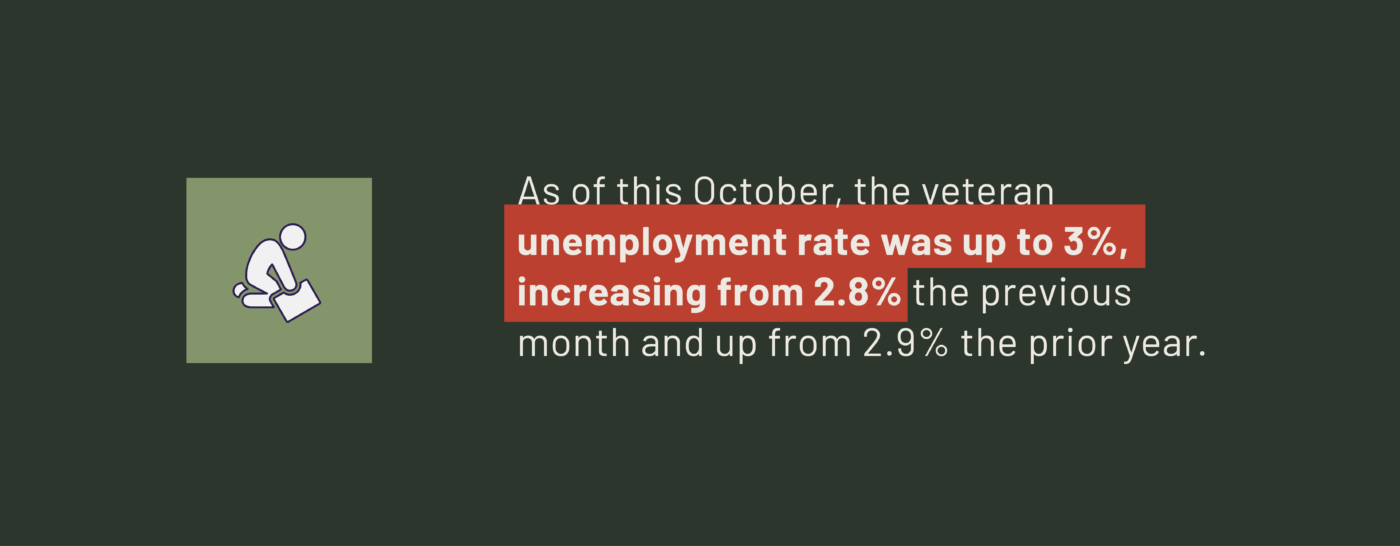
This financial instability can exacerbate stress, mental health issues, instability – and in more dire cases, worsen the veteran homelessness crisis. Although they only represent around 6% of the total U.S. pop house at least 47,925 homeless veterans and ensure that at least 95% of the veterans housed did not return to homelessness during that same year.
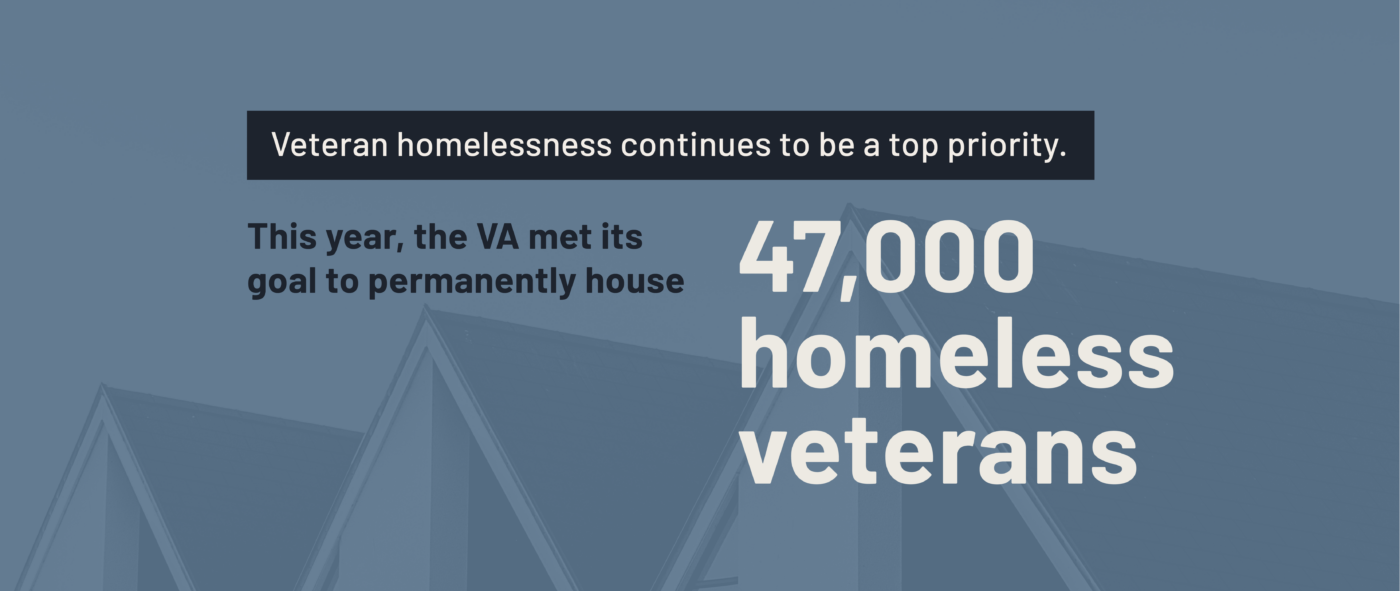
For veterans and their families who may be struggling financially, organizations such as Semper Fi & America’s Fund, America’s Warrior Partnership, and Military One Source have comprehensive resources that provide access to information on family life, deployment, benefits, transition programs, counseling services, and more. Additionally, the Army Emergency Relief, the Navy-Marine Corps Relief Society, and the Air Force Aid Society provide financial aid, grants, and interest-free loans.
For veterans struggling with homelessness, HUD-VA Supportive Housing (HUD-VASH), Homeless Patient Aligned Care Teams (HPACTs), and VA’s Legal Services for Veterans (LSV) offer case management, health care, case management, and legal support for veterans, respectively.
Family and Community Support:
The unique challenges that veterans face often extend to their families as well. Today, there are more than 2.6 million military families in the United States. These families often have to navigate frequent relocation, military spouse underemployment or unemployment, and difficulties finding childcare. These issues can be compounded when families are stationed far away from friends and family that act as a support network, and when the active duty spouse is deployed for weeks or months at a time, leaving the other parent to make ends meet.
In recent years, we’ve seen a renewed investment in supporting military families beyond the active duty member or members. The Military Spouse Employment Act was introduced in 2023 to aid military transitions by providing more flexibility for military spouses in remote work. Additionally, states are invested in supporting military families. For instance, under Governor and U.S. Army veteran Wes Moore, Maryland passed the Families Serve Act of 2024, which “authorizes private employers to grant a preference in hiring and promotion to active duty military spouses.”
Veterans in Rural & Underserved Communities:
According to the United States Department of Veterans Affairs (VA), nearly one-quarter of all veterans live in rural areas, a significant proportion of the veteran community. The states with the highest concentration of veterans are Alaska, Wyoming, Virginia, Maine, Montana, and South Carolina. These veterans face unique challenges in receiving the care and support they deserve.

For example, rural veterans are more likely to be diagnosed with critical health conditions such as diabetes, high blood pressure, obesity, heart conditions, and substance abuse disorders. However, these veterans often have limited access to healthcare providers and telehealth services, making it difficult to receive essential treatment.
Similarly, tribal veterans are an essential part of our nation’s troops that are often underserved. As of 2024, 29 Native Americans have been awarded the Medal of Honor and serve at higher rates than any other group.
Mission Roll Call has and continues to work towards improving support for these groups. In 2024, MRC focused on identifying various nonprofits serving rural veterans, as well as advocating for legislation that will improve the lives of veterans in rural communities and across the nation. In addition, organizations including the VA have taken a more intentional approach to reaching these veterans, including hosting virtual outreach symposiums. Additionally, many bills that would benefit rural veterans in particular were introduced – such as the Rural Veterans’ Improved Access to Benefits Act of 2024, and the Rural Veterans Transportation to Care Act – but in 2025, we must continue our advocacy efforts to get these and other important legislative wins on the books. All the while, MRC is committed to connecting with rural veterans themselves to hear where their priorities lie and tailor our advocacy efforts to speak into these issues and priorities.
Advocacy Efforts and Legislative Changes
Legislative Wins:
In 2024, there were several important pieces of legislation discussed that were focused on improving the lives of veterans. For example, in September, the House of Representatives (HOR) passed a bipartisan bill to provide $3 billion in mandatory funding for VA compensation, pensions, and readjustment benefits. The bill will help ensure the VA continues delivering critical support to veterans in need.
Similarly, Arizona Representative Juan Ciscomani and 54 House co-sponsors introduced H.R. 8371, the Senator Elizabeth Dole 21st Century Veterans Healthcare Benefits and Improvement Act to the House of Representatives in May. Mission Roll Call has focused advocacy efforts for this bill as it contains dozens of important provisions ranging from health care and benefits to homelessness and VA oversight. Many of these provisions were adopted in separate legislation during the 118th Congress and sent to the President for signature in late 2024.
Other notable legislative developments MRC was proud to support in 2024 include the passing of the PACT Act on March 5 and Senator Moran’s Amendment to Protect Veterans’ Second Amendment Rights on March 11. The PACT Act significantly expanded healthcare access for veterans exposed to toxins and other hazards during their service. Similarly, the Kansas Senator’s amendment protects veterans from losing their right to purchase or own firearms when they receive help managing their VA benefits.
Finally, in 2024, MRC found that suicide prevention and access to care were top concerns among the veteran community. The following legislation will also be important to track in the years following as they directly impact these issues:
- FOX Grant Program
- VCL Hotline
- SAVES Act
- Not Just a Number Act
- HOME Act
- HR 7347 – Psychedelics
- HOPE Act
- Veteran Care Act

Advocacy Milestones:
This year, MRC and several other organizations dedicated to serving veterans and military families worked together through the Veteran Service Organization Coalition. Each organization serves to address veterans’ needs through mental health support, employment services, opioid alternatives, civic engagement, and more. By working together, we were able to amplify our impact and prioritize veterans in need.
MRC also recognizes the unique value of veterans’ voices, which are sought out through frequent polling and elevated through advocacy efforts.
VA Improvements and Ongoing Challenges
Achievements in VA Services:
In 2024, the U.S. Department of Veterans Affairs (VA) announced it delivered a record for care and benefits to veterans, significantly exceeding last year’s totals. The Department largely attributed this great success to the passing of the PACT Act, which was the largest expansion of VA health care and benefits in generations. As a result, the VA claims that veteran trust increased by 25% since 2016. Today, more than 80% of veterans express trust in the VA’s support.
Beyond increasing trust, the VA’s expansion of benefits supported more than 50,000 veterans in mental health crises, 47,925 experiencing homelessness, 630,000 in need of dental care, and overall enrollment for VA healthcare saw a 37% increase from the previous year. The expansion provided significant support to veteran families and caregivers as well.
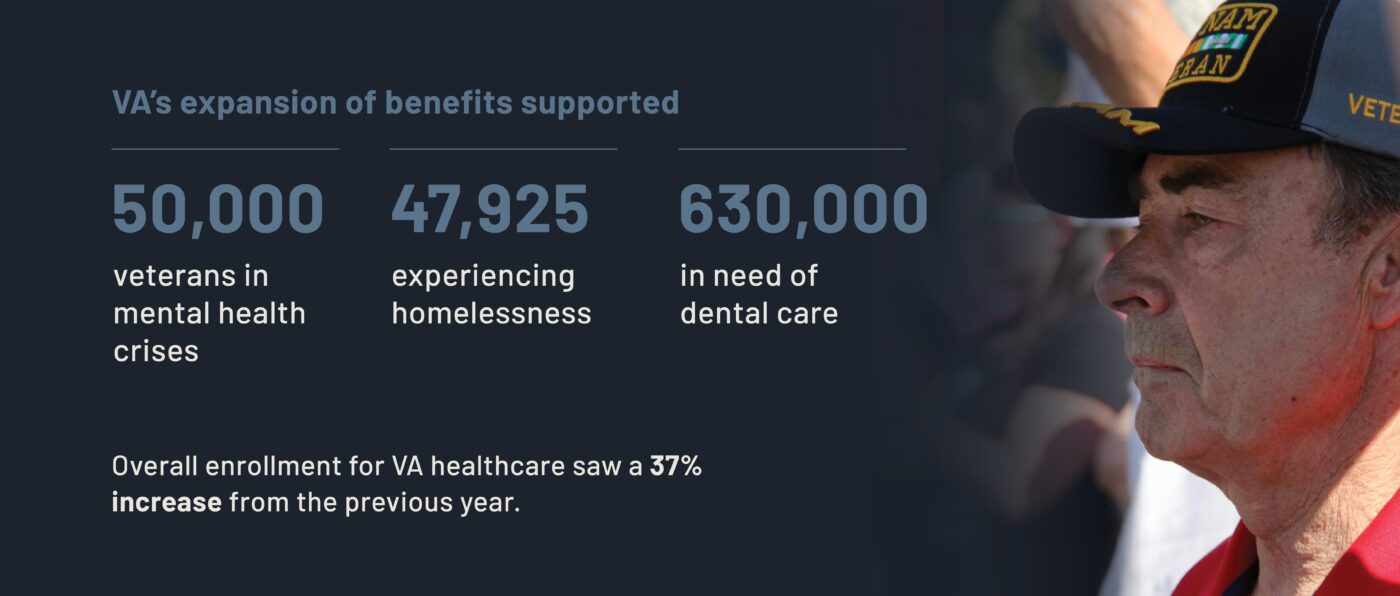
Additionally, the VA’s 2024 Equity Action Plan was a significant achievement for VA services this year. Released in February, the plan aims to improve disparities in the current benefits plan by increasing access for women veterans, people of color, LGBTQ+ veterans, and other marginalized groups. According to the VA, the plan will “work urgently to improve outcomes and eliminate disparities in Veteran benefits and health care; increase access to VA services; enhance economic security for all veterans, including historically underserved Veteran communities; listen to and learn from Veteran communities; and more.”
Remaining Challenges:
Despite significant improvements, the VA still faces many challenges in providing sufficient support to veterans in need. One of the foremost concerns lies in severe staffing shortages for Veterans Health Administration’s medical facilities across the nation. In 2024, the Office of Inspector General (OIG) reported 2,959 severe staffing shortages for the fiscal year. Although the count shows a 5% decrease from the previous fiscal year, the issue persists, causing delays in benefits processing and limited access to care.
Moreover, the OIG also found major problems with its new Electronic Health Record (EHR) since its launch four years ago. Between October 2020 and March 2024, the EHR experienced 826 “major performance incidents,” half of which occurred after the VA put all future EHR go-lives on hold. VA facilities experience outages that hinder clinicians’ access to patient records and therefore their ability to provide quality care.
Finally, despite having the largest VA budget in history in 2024, the department announced a significant funding shortfall in August. The VA claims the $9 billion shortfall is the result of an unexpected spike in benefit utilization, but failure to close the gap would leave millions without disability compensation and other necessary benefits.
Both the VA and MRC have called for Congressional action to address the issue. Whether more funding or increased accountability is necessary, Congressional action can help ensure that the historic levels of funding are translated to improved outcomes for the people it intends to serve.
Looking Ahead: 2025 and Beyond
Future Goals for Veteran Advocacy:
In 2025, MRC is committed to addressing critical veteran issues. Key priorities include advancing impactful policies, fostering new partnerships to enhance outreach, and conducting targeted polls to identify and address the most pressing challenges within the veteran community. Potential focus areas span housing stability, employment opportunities, mental health, and access to educational benefits. Through comprehensive advocacy efforts and community engagement, Mission Roll Call aims to ensure that veterans and their families receive the support, resources, and recognition they have earned.
Veterans’ Needs and Opportunities:
As Mission Roll Call advances its mission, there’s an ongoing need for collective action. Veterans and their families deserve unwavering support, whether through direct advocacy, volunteering, or engaging in service initiatives that restore a sense of purpose and community. We invite everyone to join us in shaping a future where veterans and their families receive the care, respect, and opportunities they have earned.
Service members make many sacrifices for the good of our nation. They devote years of their lives to the military, moving frequently, working long hours under stress, and sometimes truly risking their lives in service of others. Right beside them, supporting those who support us, are their families. Military families serve as an unwavering foundation for their service members through relational, financial, and emotional support. The challenges military families face are partnered with unique rewards such as the pride of knowing that their sacrifice and support are lifting up their loved ones and their country.
There are more than 2.6 million military families in the United States. Military spouses are often subject to frequent relocations and primary caretaking responsibilities in single-income households, sometimes while their partners are deployed overseas for months at a time. Moreover, military family benefits and support are often lacking, leaving the parents, spouses, and children of servicemembers with additional burdens. In 2023, only 49% of military families reported being satisfied with military life.
Mission Roll Call acts as a unified voice to educate lawmakers about issues surrounding military families, from spousal unemployment to VA access.
In this article, we will discuss:
- What is a military family?
- Who are these military families?
- What are the biggest challenges facing military families?
- What resources are available to military families?
- What are the challenges of transitioning from Military to Civilian life?
- What policies exist to support military families?
- How can you help support military families?
What is a military family?
A military family refers to a family where at least one member is an active member of the United States Armed Forces or a reservist. Typically, “military family” encompasses the service members’ immediate family: spouses, children, parents or other dependents. These relatives generally live in the same household as the service member and thus are the most directly impacted by the demands of their service – deployments, frequent relocation and long hours, for example.
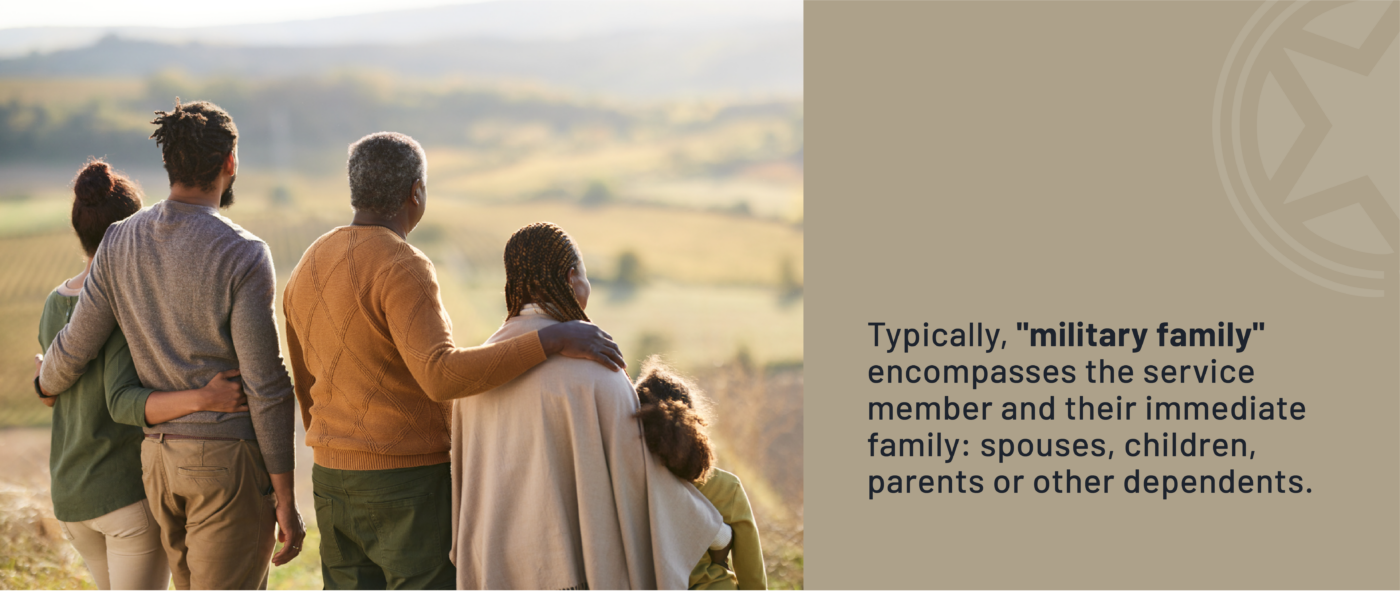
However, extended relatives or other loved ones are often impacted by their family member’s service in other ways. While these relatives are not typically defined as military families, their perception of the U.S. military is often greatly impacted by their family member’s personal experiences during and after their service. They may also be more likely to have strong opinions about active duty and veteran issues because of their proximity to the impact of these policies on their loved ones.
Who are these military families?
Military families span all U.S. Armed Forces and span diverse geographies, backgrounds, and demographics. In total, there are 2 million active component and Selected Reserve service members, with more than 1.6 million dependents. By service branch, the breakdown of service members in 2022 is as follows:
- Almost half of all service members are in the Army, with 22% in the Active Component, 16% in the National Guard, and an additional 9% in the Reserve;
- 24% of service members are in the Air Force, with 16% in the Active Component, 5% in the National Guard, and 3% in the Reserve;
- 19% of service members are enlisted in the Navy, with 16% Navy Active Component and 3% in Reserve;
- 10% of service members are in the Marine Corps, with 8% in the Active Component and the remaining 2% in Reserve.
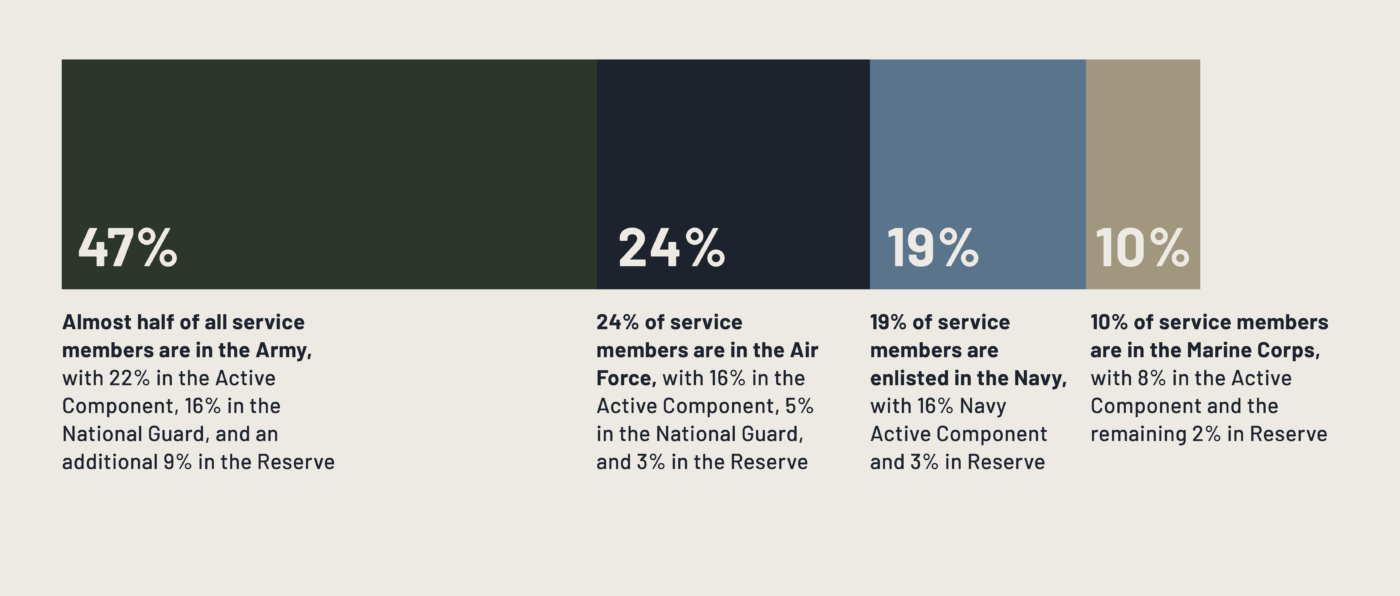
Service members’ assignments as active duty or reserves heavily affect the location of their military families. For those based in the United States, active service members are typically assigned to new bases every 2 to 3 years, resulting in continual transition for their families. By contrast, reserve service members generally maintain a continuous affiliation with a unit, and therefore their families face less relocation. Within the United States, active duty branches most heavily reside in California, Virginia, Texas, North Carolina, and Georgia. Similarly, most reserve units are located in Texas, California, Pennsylvania, Florida, and New York. As follows, these states tend to have large military family presence and transition. An additional 228,000 active duty personnel and 60,000 reserve personnel are stationed overseas.
Many of these service members are young men and women in early adulthood. Given the physical requirements and stressors of a career in the military, the force is structured to be built around a young demographic; the minimum age for entering military service is 17 and the maximum age is 42. Because service members skew strongly into those in young adulthood, many major milestones such as marriage and having children occur while they are in the peak years of their military career.
Half of the service member population is married, and 40% have children. Single parents make up 3.9% of active duty families and 8.5% of reserve and guard families. Additionally, 7% of active duty service members and 2.6% of the reserves and guard populations are in dual-military marriages. These conditions often require additional childcare, employment needs, and financial strain.
While there are about 1 million military spouses, nearly 10% of which are male, there are more than 1.6 million military children. Of the children in the K-12 age range, 80% attend public schools, meaning their school year is often interrupted during relocations. Frequent changes in school, childcare providers, and long stretches of time with a parent deployed can cause military children to face greater than average stress levels.
Military families who currently have a family member serving in the military, guard, reserves, or who are veterans are called Blue Star families. Silver Star families are classified by having a family member who is a wounded, ill, and/or injured veteran from any branch of the armed forces. Gold Star families are those who have lost a loved one during active duty service in any of the military branches and during any conflict. Lastly, Green/White Star families are families who have experienced a military member loss through suicide from any branch of service.
What are the biggest challenges facing military families?
The biggest challenges that military families face are: frequent relocation, military spouse underemployment or unemployment, and childcare. These interrelated issues often come with additional stressors as families have to consistently reacclimate to new environments, community and school groups.
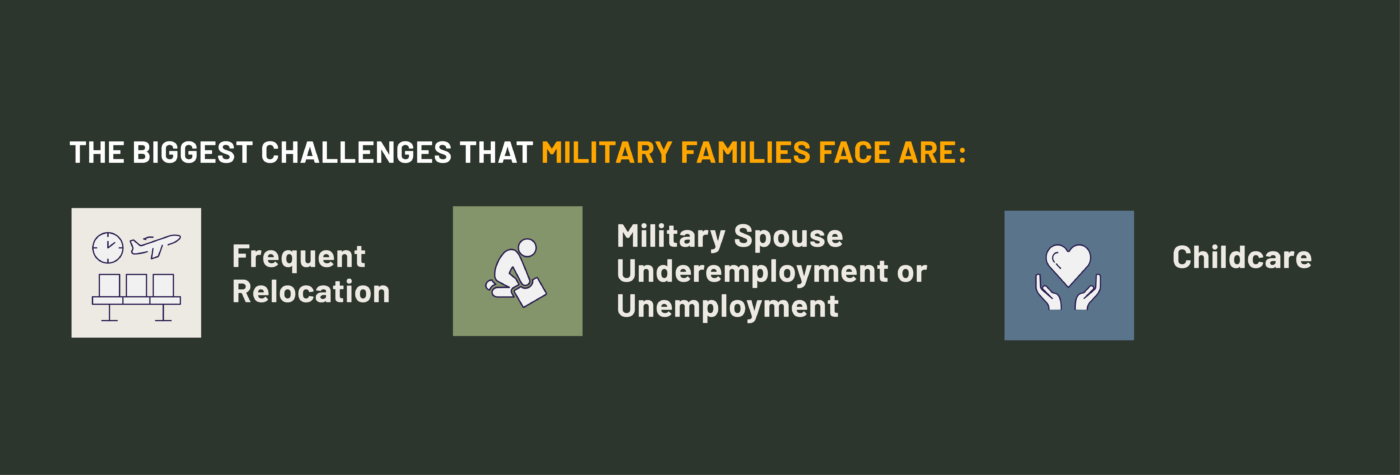
Military families are subject to frequent relocation. Each year, about one-third of all service members and their families are given a Permanent Change of Station (PCS) order to move to a new post, where they will typically stay for two to four years. Summer transitions are most common with the majority of these moves occurring between May and September, in what is referred to as PCS season, since it is in between school years for children. However, about 400,000 service members receive PCS orders in December and January, forcing their children to transfer schools in the middle of a school year.
These PCS orders will include a “Report No Later Than Date” for the service member to check in at their new assignment, which puts pressure on their military families to pick new schools, get new jobs, find new homes, secure child care, and settle into a new community typically within around 120 days. Oftentimes, military families will stay in a hotel or temporary housing until they can purchase a home in the area or get assigned a home on base. This puts unnecessary and extreme stress on military spouses.
In addition to organizing a move for the family, military spouses also need to search for new employment. Given the frequency at which military families move, military spouses have long faced employment challenges with an unemployment rate that soared to 38% after the COVID-19 pandemic. The unemployment rate among military spouses is five times the national average, which one in five military families cited as a reason for leaving active duty service.
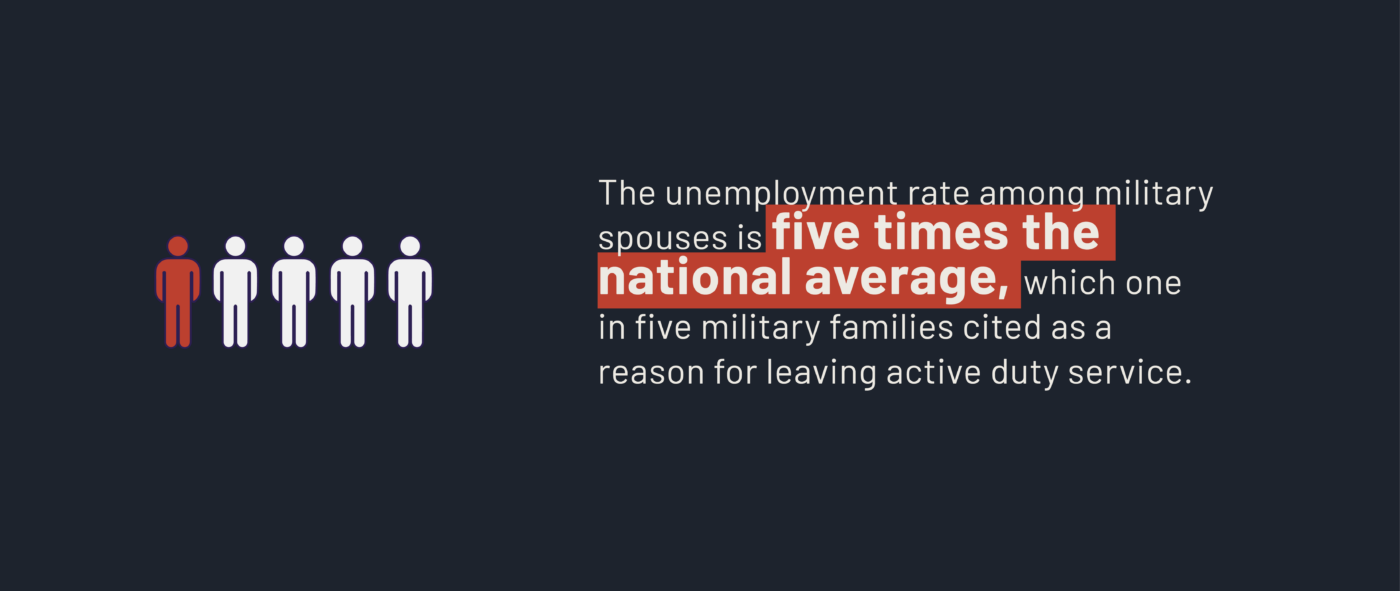
Due to the nature of PCS orders, military spouses are typically not awarded unemployment benefits since they “voluntarily leave” their jobs. While some U.S. states have military family benefits that allow spouses to receive unemployment compensation for moving along with their active-duty partner due to PCS orders, this compensation may not equate to a full-time salary and still necessitates that the military spouse sacrifice or delay career goals in order to accommodate the PCS orders.
Additionally, there are 14.3 million caregivers to service members and veterans, representing 5.5 percent of the U.S. adult population. Seventy percent of these caregivers are military spouses who are responsible for assisting their partners with daily activities and medical tasks. This takes a heavy mental and financial toll on military spouses.
For caregivers and employed spouses, child care is often a necessity. As a result, the Department of Defense provides on-base child care for military children. However, the COVID-19 pandemic triggered a shortage of childcare providers, and it falls on military families to come up with ways to overcome this gap. In May, 9,000 children were waiting months for spots at one of the military’s child care centers.
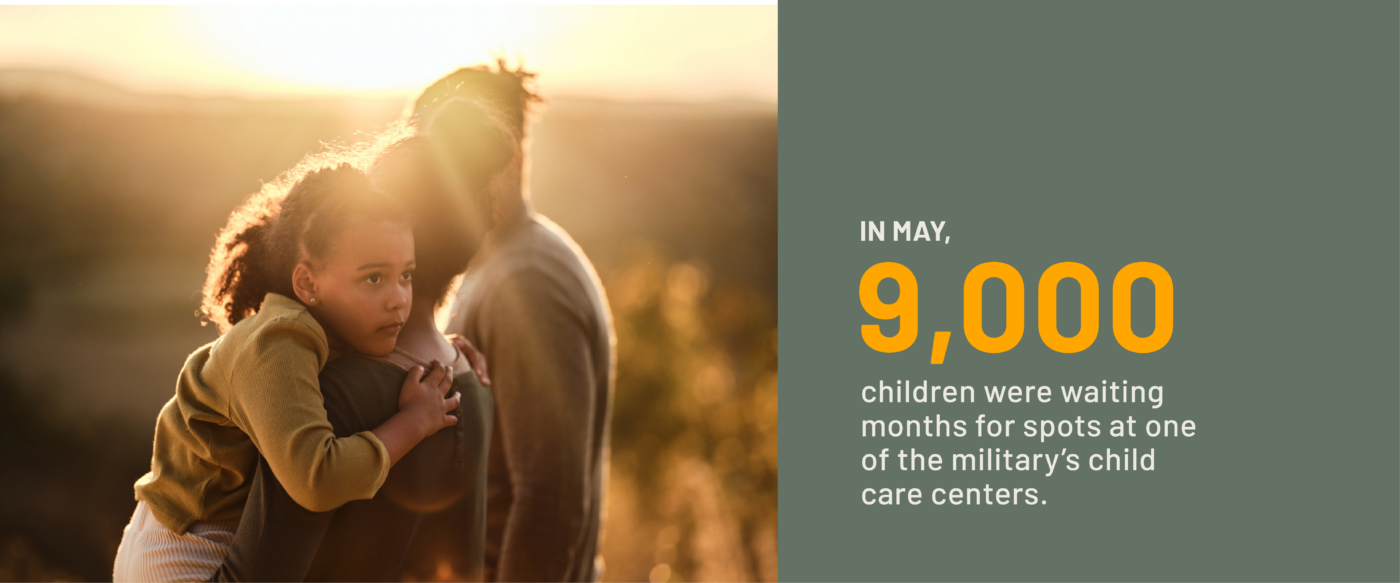
Amid all of the logistical stressors military families are subject to during relocation, many also experience difficulties adjusting to their new communities: spouses are often isolated from close friends and family and must frequently develop new relationships with other parents or coworkers; children must meet new friends at school; and families have to reestablish routines such as finding doctors, babysitters, and even new traffic routes and grocery stores. These factors can be further exacerbated for PCS families that move to installations designated as “remote and isolated.” These areas are far from urban centers and transportation access, adding to the difficulty of seeing friends and family or growing a new community.
What resources are available to military families?
Federal and state governments, nonprofit organizations, and private companies all work to provide resources and support for military families.
Organizations such as the Semper Fi & America’s Fund and Military One Source are comprehensive resources that provide access to information on family life, deployment, benefits, transition programs, counseling services, and more. Families can also find information in the National Resource Directory, a database that connects wounded warriors, service members, veterans, their families, and caregivers to programs and services that support them.
For health and wellness, TRICARE provides comprehensive medical, dental, and mental health services. Veterans can also access health care through the VA Medical Benefits. Additionally, families may qualify for food assistance through federal programs such as SNAP.
Organizations such as the Army Emergency Relief, the Navy-Marine Corps Relief Society, and the Air Force Aid Society provide financial aid, grants, and interest-free loans. Military OneSource’s MilTax offers free tax services for members of the National Guard and Reserves, immediate family members, and eligible survivors.
For education and childcare, the Post-9/11 GI Bill offers educational benefits to service members, veterans, and their dependents. The Military Child Education Coalition supports military children in schools, and School Liaison Officers assist families in navigating school systems at military installations. Child development centers also provide affordable, high-quality child care on military bases, and the Family Advocacy Program offers support for domestic and child abuse prevention. The New Parent Support Program also provides home visits and parenting education.
For housing assistance, military families can access on-base housing or receive a basic housing allowance through the Department of Defense (DoD) to help cover off-base living expenses. Each military installation also has housing offices that offer guidance in finding suitable accommodations. Veterans who are homeless or are in danger of becoming homeless can contact the VA National Homeless Call Center at 877-424-3838.
Relocation and transition support are available through services like the Relocation Assistance Program, which helps families transition smoothly during a PCS move. Programs like Navy MWR – which offers fitness centers, sports leagues, and travel discounts – can provide military families with a sense of community. The USO also supports military families with their trademark entertainment programs such as USO entertainment tours.
Military families and veterans can access these resources either directly or through organizations that help to connect military families to the support networks they need.
Mission Roll Call has referred veterans and their families to several organizations over the years. For example, America’s Warrior Partnership (AWP) is a national nonprofit focused on helping veterans and their families access essential resources through local community programs. AWP partners with communities across the U.S. to connect military families with benefits, healthcare, housing, and employment services. Military and veteran families can access assistance via this link or by contacting the AWP Network Support Line at 1-866-297-8397.
What are the challenges of transitioning from military to civilian life?
Despite the availability of various resources, military personnel often face significant challenges when transitioning to civilian life. Veterans report difficulties in finding employment, maintaining mental and physical health, and achieving stability in financial and social domains.
A recent Mission Roll Call poll highlights these struggles. When asked, “What was the hardest part of your transition from military service?” 30.26% of respondents identified the VA process, 26.48% mentioned finding a job, and 28.05% pointed to establishing a routine. Alarmingly, only 15% of veterans felt that the military’s transition assistance program adequately prepared them for entering the civilian workforce.
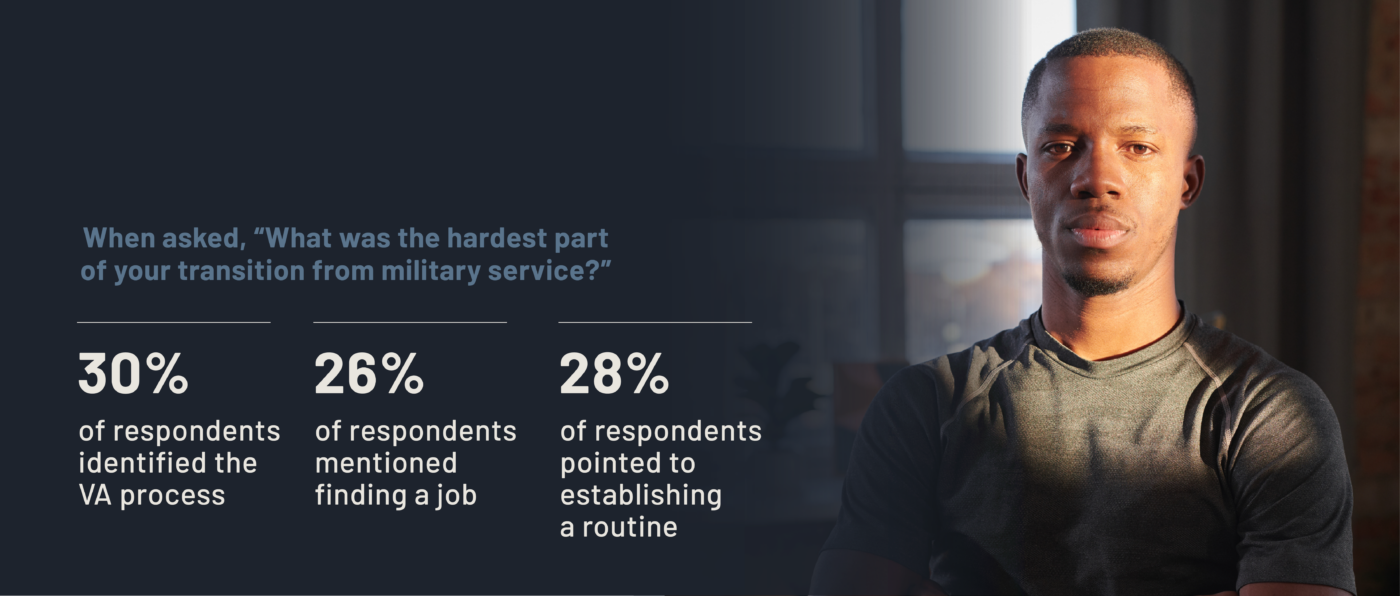
The challenges extend to healthcare as well. Just 40% of veterans expressed satisfaction with the VA’s approach to treating post-traumatic stress, a condition that affects millions of war survivors worldwide. This dissatisfaction suggests a gap in the support provided to veterans coping with the psychological toll of military service.
Financial stress is another critical issue. According to a 2021 report, more than three-quarters (75.8%) of military and veteran families carry debt, and more than 80% experience financial stress. This economic strain compounds the mental health challenges veterans face, often increasing their risk of homelessness—a problem that saw a 7.4% rise in 2023.
Together, these difficulties highlight the need for more effective support systems to ensure veterans and their families can transition successfully into civilian life.
What policies exist to support military families?
Several bills have been introduced to or passed by Congress that aim to support military families by addressing key challenges like employment, housing, childcare, and healthcare. For example, The Military Family Stability Act, which was introduced to the House of Representatives in 2017, is designed to provide greater flexibility during relocations, reducing disruptions to employment and education. By giving families more time between relocations and additional support before, during, and after the relocation process, the Act would help ensure that when service members and their families do need to relocate for military service, they are able to do so sustainably and maintain stability.
In addition, The Military Spouse Employment Act would improve job opportunities for spouses by offering job training, remote work options, and hiring incentives for businesses. After passing the Senate in June 2023, the bill is now under consideration in the House of Representatives. Currently, appointment authority for military spouses does not include remote work, limiting their career flexibility. By addressing this gap, the Act would expand career options and improve financial stability for military families.
Mental health is a focus of the Veterans Mental Health and Addiction Therapy Quality of Care Act, which seeks to address the quality of care provided by healthcare providers of the Department compared to non-Department providers.
These policies would augment the existing provisions and legislative support that exists for military families. For example, the Military Child Care Act of 1989 addressed childcare by allocating $157 million for childcare services (equivalent to $356 million today), introducing minimum safety and accreditation standards for military child care centers, requiring staff background checks, and implementing a standardized priority and fee system.
The Veterans Housing Stability Act tackled housing issues by helping veterans and active service members with VA home loans exit forbearance, get their mortgage payments back on track, and stay in their homes. Similarly, the Mental Health for Military Families Act enables the Secretary of Defense to waive out-of-pocket costs for military families under TRICARE for their first three outpatient mental health visits each year, reducing expenses and making it easier for families to access necessary care
Additionally, in March of 2020, the Immigration and Nationality Act (INA) was signed into law to aid undocumented family members of service members by allowing them to apply for legal status without leaving the U.S. The policies aim to recognize the significant contributions of immigrant military personnel and provide them, and their families, with a faster path to citizenship.
Policy reform can have a significant impact on military families. While these bills show some of the major strides that the federal government has made to support service members and their families, there is still much to be done to ensure military families have the support they deserve.
How can you help support military families?
There are many ways you can support military families, either through personal actions, community involvement, or advocacy.
Ways to support:
- Volunteer: Join organizations that support military families, such as the USO, Blue Star Families, or local family readiness groups. Volunteering your time to assist with events, childcare, or providing other services can make a meaningful difference. Mission Roll Call offers a comprehensive Veteran Nonprofits list to help you get started.
- Donate: Contribute to charities that help military families, such as Operation Homefront, which provides emergency assistance and housing support, or Fisher House Foundation, which offers free lodging for families near military hospitals.
- Advocate for Legislation: Support bills to improve the quality of life for military families by exercising your right to vote, considering outreach to your representatives if this issue is of interest, joining advocacy groups, or spreading awareness on social media.
- Offer Employment Opportunities: If you’re an employer or know someone hiring, consider offering jobs or remote work options to military spouses, who often face challenges finding and retaining employment due to frequent relocations.
- Provide Childcare or Mentorship: Help military families by offering babysitting, tutoring, or mentorship to military children, who endure considerable stress from parental deployments and frequent moves.
- Raise Awareness: Use your voice on social media, in your community, or by participating in advocacy polls to raise awareness about the unique challenges military families face and advocate for better support systems, both locally and nationally.
“We the People of the United States… do ordain and establish this Constitution for the United States of America.” In 1787, United States delegates convened in Philadelphia where, over the course of several months, they drafted the Constitution. In doing so, they set the framework for the future of our democratic nation. More than 200 years later, we are still upholding the vision of our founders: a government of the people, for the people, by the people – and as we head into another presidential election, this vision is as important today as ever.
United States veterans have a heightened role in preserving the Constitutional rights on which this country was founded. When joining the U.S. Armed Forces, every service member takes an Oath of Enlistment or Office, in which they solemnly swear to “support and defend the Constitution of the United States.” This pledge evolves over the years as service members step up to meet whatever challenges are necessary to support our nation. But the oath also extends beyond their military service and translates to their civilian life, especially civic duties like voting.
In the last presidential election, only 74.1% of veterans cast their votes. While slightly higher than the percentage of nonveterans who voted, this statistic means that one in four veterans’ voices are missing from the polls. Given the countless sacrifices veterans make for our country, their voices must be heard and counted. With veteran policy embedded in both presidential candidates’ campaigns, each vote will have a direct effect on the 18 million current U.S. veterans, their families, and all future generations of service members to follow.
Increasing voter representation also means it’s imperative to eliminate logistical roadblocks to ensure every veteran – and current service member – who wants to vote has the opportunity to. Active duty service members in particular may face barriers that make it more difficult for them to cast their vote. In 2022, 63% of active duty members were registered to vote, yet only 26% percent participated in the election. A large factor in this discrepancy is overseas deployments and domestic relocations. Most active duty service members spend months or years in training or on deployments that take them outside their home state, and often outside the country. The government has taken steps to help better support service members’ ability to vote through corrective initiatives like the Uniformed and Overseas Citizens Absentee Voting Act. Unfortunately, there are still many who fall through the cracks. In the last midterm election, 13.8% of active military members indicated they had expected to get a ballot but did not receive one. These frequent relocations – and the varying state laws, administrative procedures, and lack of information that come with them – not only impact service members’ ability to cast their vote but often their spouses and other military family members of voting age as well.
Low military voter turnout is especially problematic because it means that active duty and veteran service members are not weighing in on the policies that directly affect them. Both the Republican and Democratic candidates have platforms that include policies which could shape the lives of veterans or active duty service members. For instance, there has been heightened discussion around the PACT Act, which provides veterans and their survivors healthcare and benefits if they were exposed to burn pits, Agent Orange, or other toxic substances. Similarly, the candidates have brought the Post- 9/11 GI Bill into their campaigns, which assists those who served on active duty after September 10, 2001, in paying for school or covering expenses while training for a job.
The VA MISSION Act, which allows a veteran to visit a local provider if a VA hospital is too far away or the wait list is too long, has also been a frequent talking point this election cycle. Veterans should be paying attention: a recent Mission Roll Call poll found that, when asked which topics should be most heavily discussed during the 2024 election cycle, polled veterans placed the quality of and access to healthcare as their top priority. In the same poll, veterans ranked veteran homelessness as their second priority. U.S. homelessness is at its highest rate since 2012, with veterans making up about 7% of all homeless adults, even though they only represent around 6% of the total U.S. population. Exercising their right to vote is one of the best ways that veterans and their families can ensure that their voices are heard and that the topics they care most about are taken seriously.
Beyond veteran-specific legislation, this is a pivotal election, and its outcome will determine the trajectory of many policies that impact all U.S. citizens, veterans and service members included. These topics span from healthcare, foreign policy, and government funding to unemployment and retirement benefits. It is common for issues that affect millions of Americans to have a disproportionate effect on veterans, making their voice even more necessary in this opportunity for change. A recent MRC poll showed that 97% of U.S. veterans are registered to vote this election, indicating their commitment to making their voices heard. Come November, it is critical this high registration number translates to high voter turnout in order to share the veteran perspective.
Although barriers to voting persist, the military community continues to work to increase veteran turnout. Beyond encouraging voter registration and helping service members attain and submit absentee ballots, there are initiatives that support civic engagement within the military community, like Mission Roll Call’s valued partner Vet the Vote. Their initiative to recruit veterans and military families as poll workers provides additional opportunities for veterans to participate in the electoral process and fulfill their civic duties. More than 160,000 veterans and military family members have been recruited by Vet the Vote to serve as poll workers in every region of the United States, demonstrating their commitment to upholding our Constitutional rights.
There are many ways to get involved and amplify the veteran perspective this election season, whether through organizations like Vet The Vote or by simply requesting an absentee ballot, but it’s important to start talking about these opportunities now, before November 5. Each individual vote counts towards the collective veteran voice, and more broadly, to the American voice. This election year offers an opportunity for change – for service members, veterans, their families, and our nation.
Every one of our nation’s service members takes an oath to support and defend the Constitution. Even after they retire from active duty, they can still help strengthen our nation by showing up at the polls this November and exercising the rights that they, and all those who served before them, fought to defend.
Rural and tribal veterans have played a significant role in the U.S. Armed Forces. Yet these underserved communities often face unique challenges in accessing the care and support they need after their time in service.
More than four million veterans reside in rural communities across the country. This includes many Indigenous veterans, who serve in the U.S. military at higher rates than any other group. Providing comprehensive, high-quality care to these veterans is a challenge, leading to further health disparities among these communities.
Mission Roll Call acts as a unified voice to educate lawmakers about issues surrounding access to timely and effective care, while amplifying voices of underserved veterans in rural and tribal areas. Since our founding in 2019, we’ve worked tirelessly to bring attention to the needs of these veteran communities.
In this article we will discuss:
- How many veterans live in rural areas?
- Why is access to care so important for rural veterans?
- Who are tribal veterans?
- What are the health care challenges facing tribal veterans?
- What is the suicide rate among rural and tribal veterans?
- What is the VA doing for underserved veterans?
- How can we support underserved veterans?
How many veterans live in rural areas?
Rural veterans represent a significant proportion of the nation’s veteran community. According to the United States Department of Veterans Affairs (VA), of the more than 18 million United States veterans, nearly a quarter of them – 4.4 million – live in rural areas. Veterans are more likely to live in rural areas than Americans who did not serve in the military.
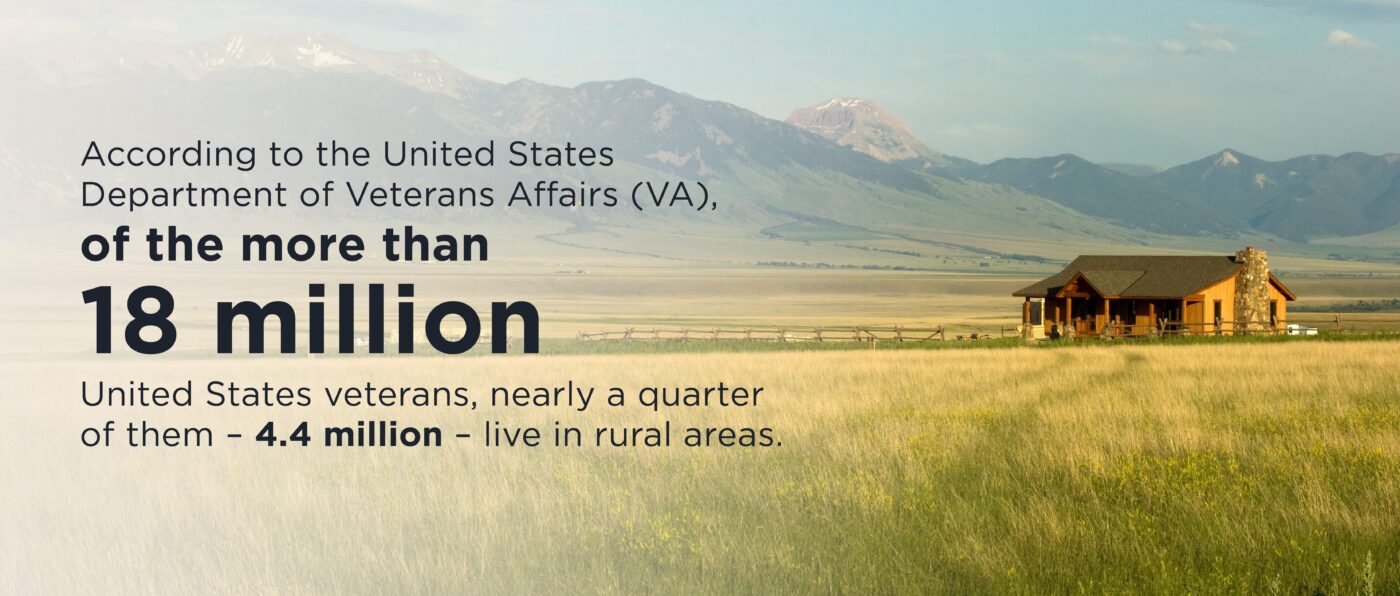
Veterans choose to live in rural areas because these areas typically have a lower cost of living; because they want to be closer to family, friends and community; because rural areas offer more land and space; and because some veterans seek less crowded areas to protect their mental health. The states with the highest concentration of veterans are Alaska, Wyoming, Virginia, Maine, Montana and South Carolina.
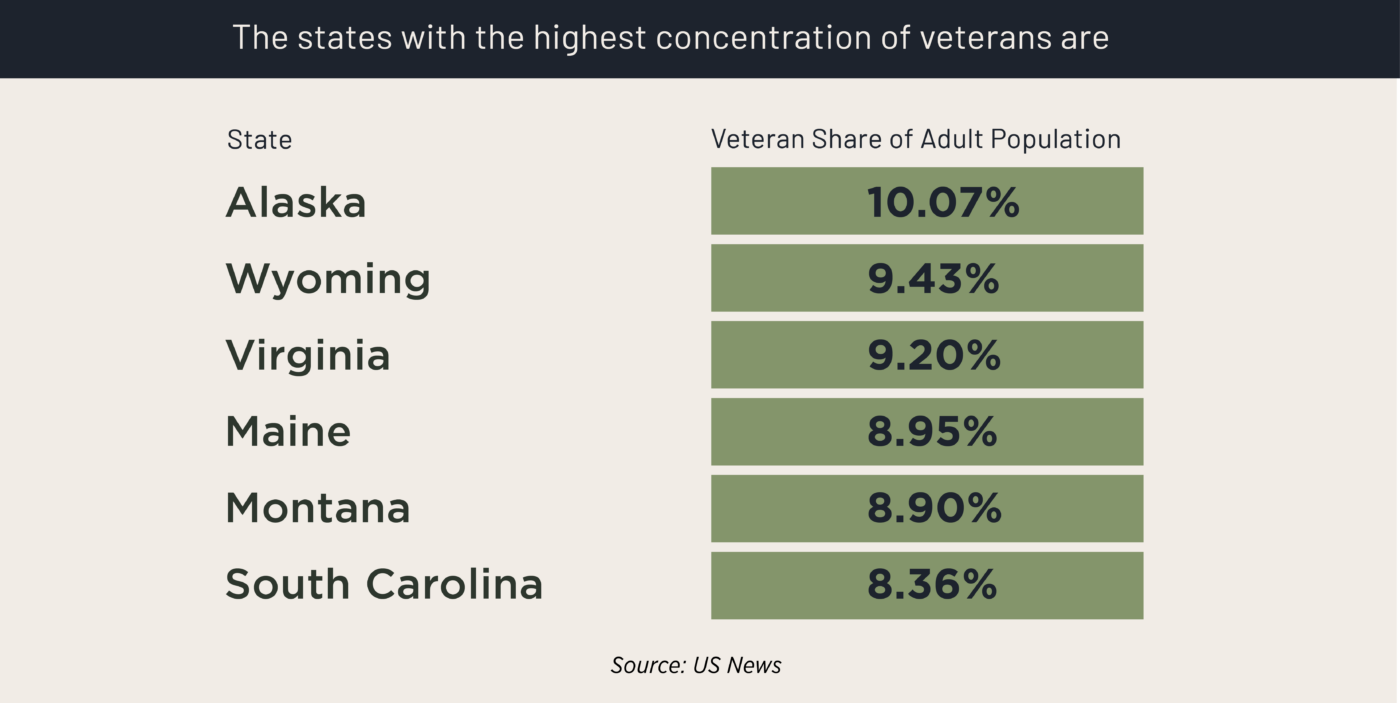
There are fewer health care providers and nurses per capita in rural areas, and rural veterans do not always live near VA health care services, which may be one of the reasons why only 2.7 million rural veterans are enrolled in the VA. But access to health care is critical for these veterans especially.
Why is access to care so important for rural veterans?
Access to preventive care and emergency services is vital, but it is harder to access for many living in rural areas.
Access to all types of care is important for rural veterans especially because:
- More than a quarter of rural veterans do not access the internet at home, meaning they are not able to access telehealth services or health-related information. And many do not even have a primary care provider.
- Many rural veterans are at an advanced age, with 56% age 65 or older.
Rural veterans are more likely to be diagnosed with diabetes, high blood pressure, obesity, and heart conditions. These conditions require more frequent, ongoing, and costly care.
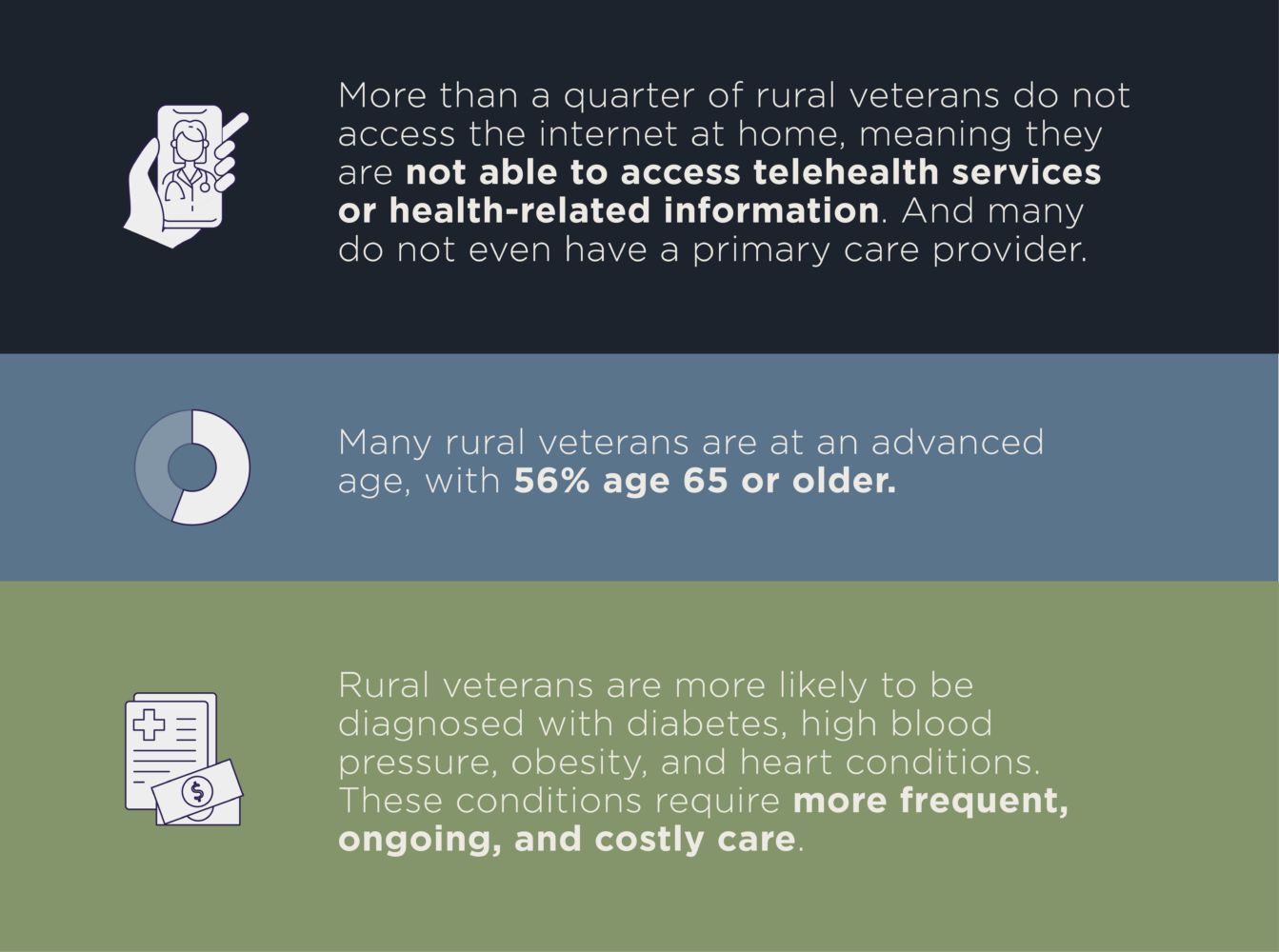
Additionally, rural veterans have lower average household incomes than other veterans, with more than half earning an annual income of less than $35,000. To put this in perspective, in 2023, the poverty threshold for a family of four in the U.S. was $30,000. The cost of travel to reach health care services can be extremely difficult for veterans on a fixed income.
Rural veterans may have higher rates of substance abuse. A 2019 study found that rural veterans had slightly higher rates of admissions for opiate and injectable drug use disorders than urban veterans. Additionally, studies have found that rural veterans are less likely to get medication for opioid use disorder, less likely to initiate treatment for alcohol abuse, and 63% less likely to receive education on alcohol use.
Who are tribal veterans?
Native Americans are more likely than any other race or ethnic group to live in rural America. There are an estimated 160,000 Indigenous American Indian, Native Hawaiian, and Alaska Native veterans in the United States, and about 39% live in rural areas.
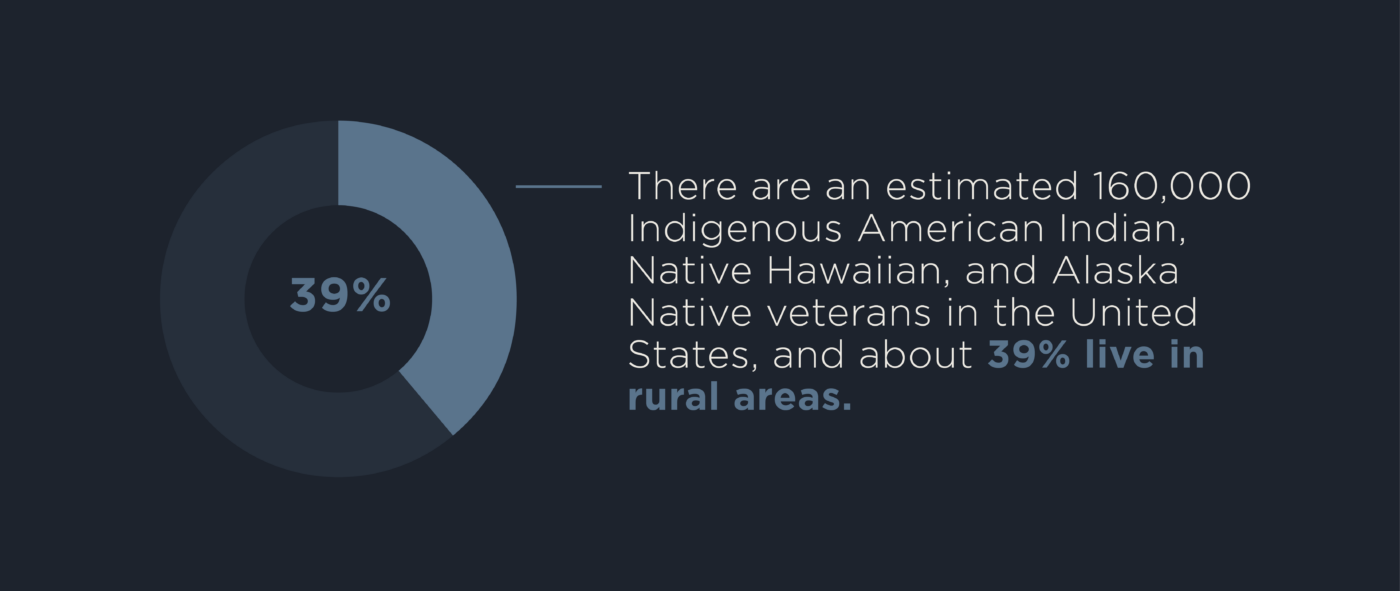
American Indians and Alaska Natives serve in the military at higher rates than any other group — five times the national average –– and have the highest per-capita service rate of any population. To date, 29 Native Americans have been awarded the Medal of Honor, our nation’s highest military honor.
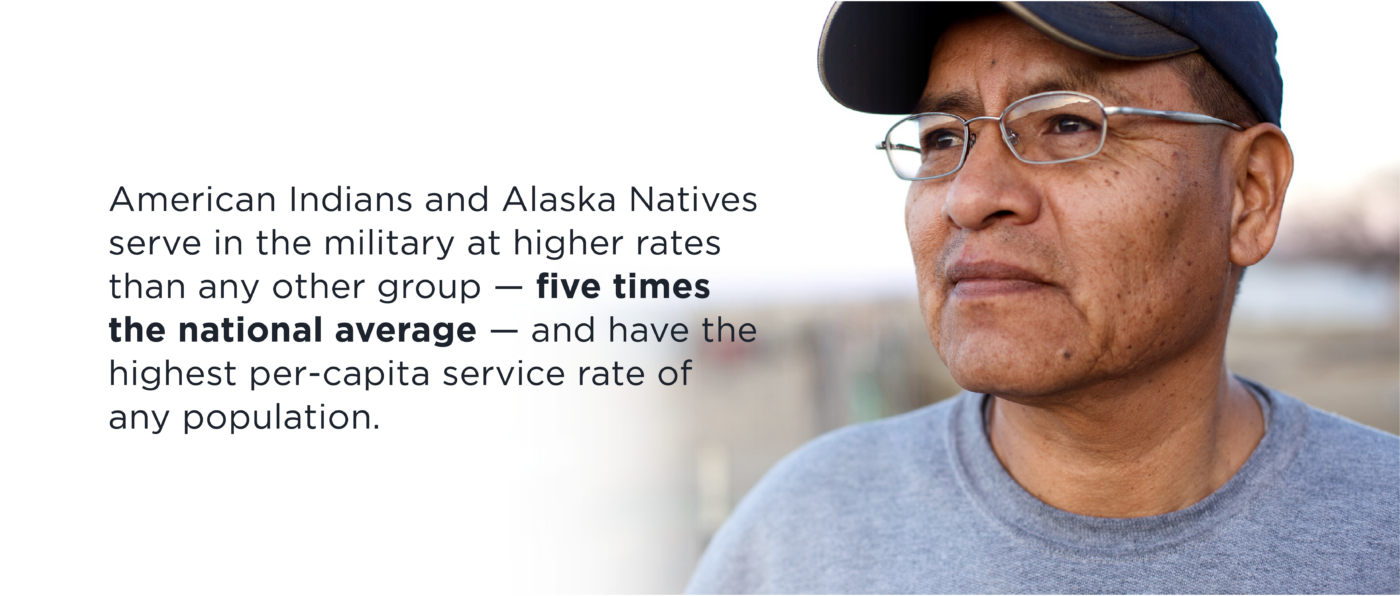
At Mission Roll Call, we use the term “tribal,” though we recognize there are several terms used to describe Indigenous people, including Native American, American Indian, or the names of the many communities within this ethnic group. We have incorporated a few of these with respect to the information referenced and in hopes of highlighting the diversity among Indigenous veterans.
Tribal veterans have bravely served in every major conflict from the Revolutionary War to our most recent conflicts in the Middle East. For example, it is estimated that up to a quarter of all Native American men served in World War I, even in the face of racism.
What are the health care challenges facing tribal veterans?
Whether returning from service to live on reservations, in rural communities, or in urban environments, many Native American service members are experiencing gaps in veteran care that are exacerbated by unique socioeconomic factors.
Today, 326 American Indian reservations are home to about one-quarter of American Indians and Alaska Natives. Residents of these areas continue to deal with a poor quality of life, such as a lack of adequate cooking equipment, plumbing, and air conditioning.
Tribal veterans living both inside and outside of reservations often have lower incomes, lower education levels, and higher unemployment than veterans of other ethnicities. According to the VA, they are also more likely to lack health insurance and have a disability – service-related or otherwise.
Native American health is disproportionately worse than other racial groups in the U.S., with extremely high rates of heart disease, diabetes, and cancer.
- According to the Centers for Disease Control (CDC), 22.4% of American Indian and Alaska Native adults are considered to be in fair to poor health.
- Close to one-quarter (24.1%) of adults in this demographic are uninsured.
- Although almost three-quarters (74.3%) of American Indian and Alaska Native service members are enrolled in VA health, Indigenous veterans living in rural areas often have trouble accessing care because VA facilities are backlogged or far away.
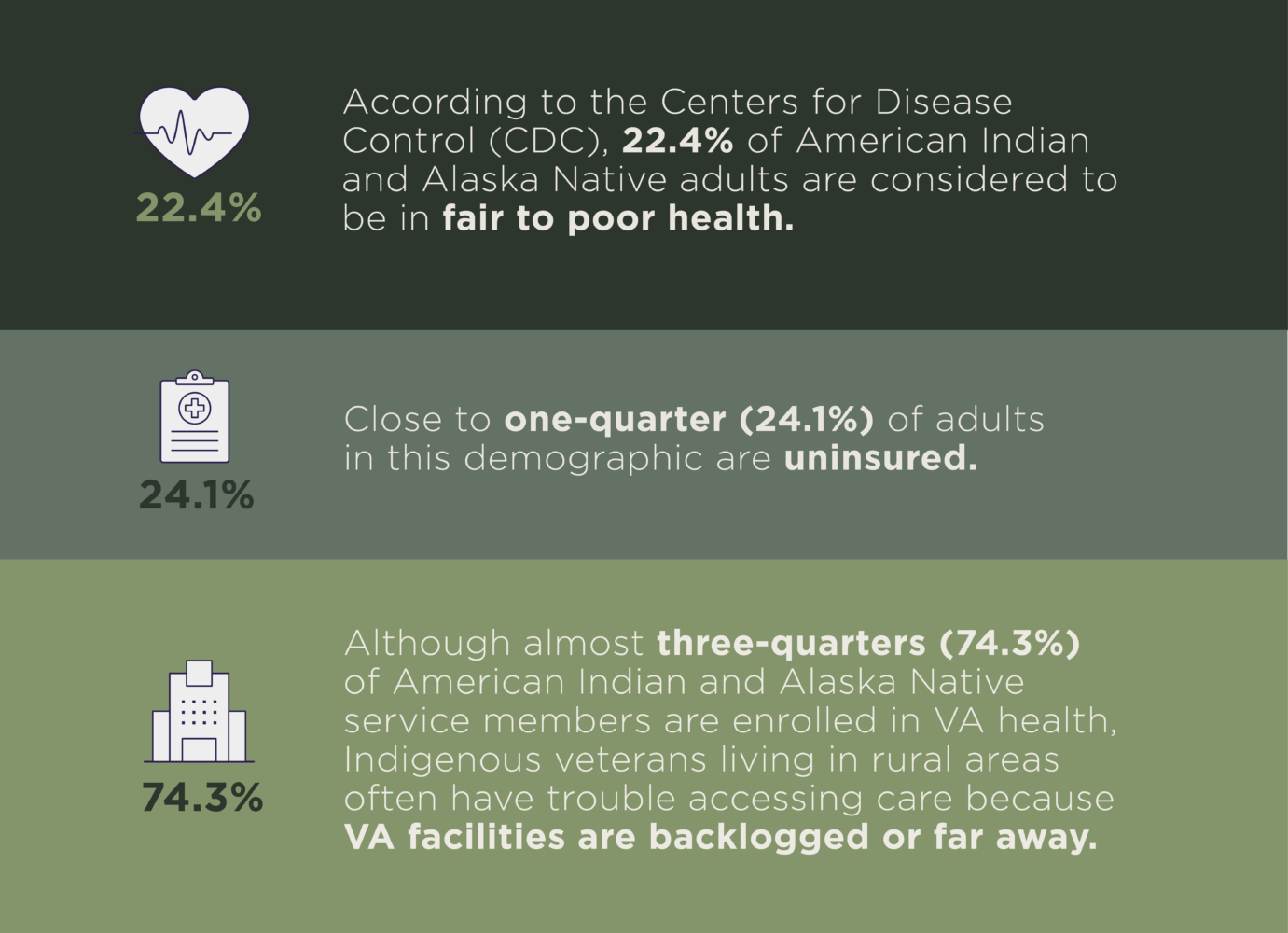
Additionally, Native American service members have often described military experiences as “spiritually isolating” due to judgments or ignorance around their unique customs. In fact, they were not legally allowed to practice their religion until 1978 with the passage of the American Indian Religious Freedom Act (AIRFA), and gaps in faith services for Indigenous service members have persisted.
What is the suicide rate among rural and tribal veterans?
Suicide rates among rural veterans are higher than rates among urban veterans. Veterans living in rural areas (who use VA’s healthcare system) are 65% more likely to die from suicide than those in urban areas.
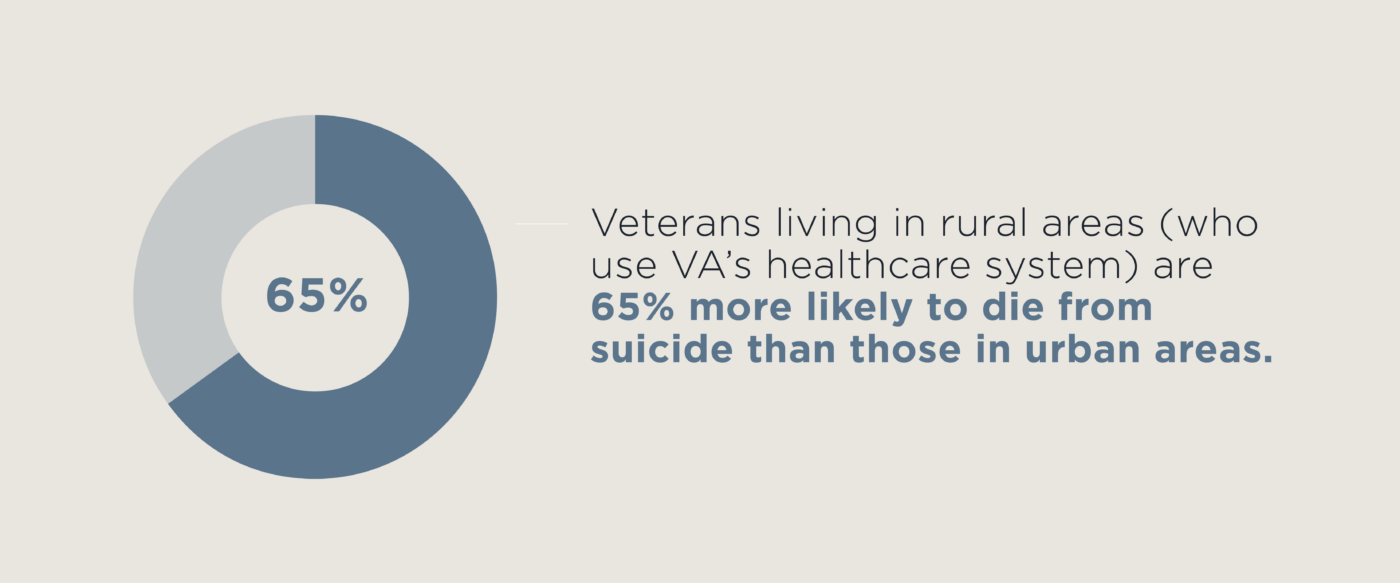
There are varied reasons for this, but VA findings show veterans living in rural areas are less likely to have access/transportation to care, are less likely to receive regular health exams, and are more likely to own a firearm. Additionally, rural veterans report that one barrier to mental health services is the perception in their community that seeking help for mental health is an admission of weakness.
Additionally, Hispanics, American Indian and Alaska Natives are experiencing a growing disparity. Among rural veterans, American Indian and Alaska Natives have twice the risk for suicidal ideation compared to White veterans. And rural residence is associated with a 41% increase in suicide risk among Hispanic veterans.
Indigenous people have the highest suicide rates of all ethnic groups in the U.S. Factors such as cultural stigmas, substance use, social isolation, poverty, limited access to health care, and high unemployment rates play a role, along with experiences unique to Indigenous people around historical trauma and discrimination.
For Indigenous service members returning home from their time in service, the numbers are particularly concerning. In 2021, the suicide rate was 46.3 per 100,000 for American Indian or Alaska Native veterans, compared to 36.3 per 100,000 for White veterans.
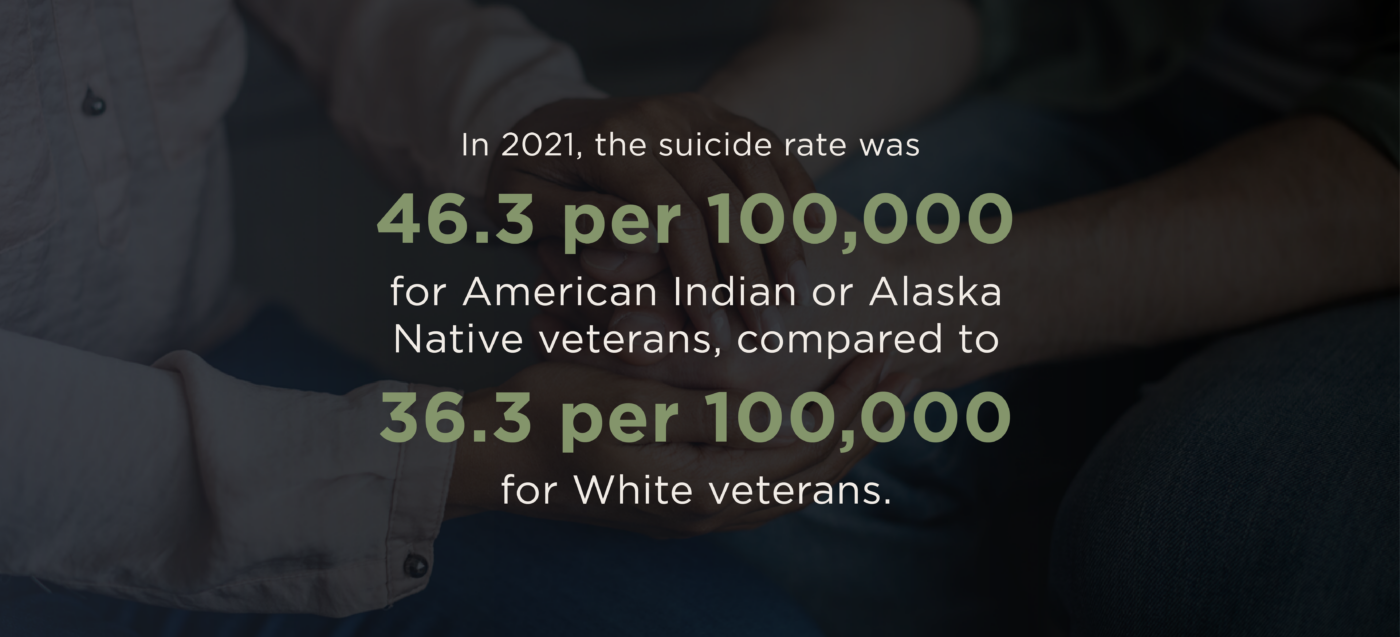
What is the VA doing for underserved veterans?
The VA’s Connected Care Program seeks to bring broadband access to more rural places with limited capacity, in order to support remote virtual care. Additionally, the VA and Walmart have partnered to offer telehealth services to reach underserved veterans. This is important because according to the Secretary’s Center for Strategic Partnerships, 90% of Americans live within 10 miles of a Walmart.
On June 6, 2018, the VA MISSION Act was signed into law, becoming effective June 6, 2019. The MISSION Act strengthens the VA’s ability to deliver veterans’ care virtually through telehealth, and through community care providers.
In recognizing the unique socioeconomic and environmental factors among rural and tribal veterans, the VA is seeking to incorporate more “culturally tailored” initiatives. For example, in the Native American veteran community, this includes providing alternatives to clinical exam rooms and consulting with tribe leaders for outreach. It is also developing community partnerships with state and local community services and agencies to improve mental health among underserved communities.
In 2022, the VA released a notice for its Tribal Representation Expansion Project that seeks to establish greater collaboration with tribal governments to expand opportunities for claims representation where needed.
How can we support underserved veterans?
The first step toward supporting these communities is educating ourselves on the unique challenges they face, and how stereotypes of these communities may impact how we perceive them and the care they receive.
Here are three ways you can support underserved veterans:
- Mission Roll Call has identified and vetted many nonprofit organizations that work with these communities. For example, The Alaska Warrior Partnership™ (AKWP) is committed to improving veterans’ quality of life in the state of Alaska through the coordination of local services and opportunities. And Boulder Crest Foundation provides a free, first-class rural wellness retreat dedicated to helping America’s military members, veterans and their families.
- Most legislation that would help these communities are not stand-alone pieces of legislation (for example, the MISSION Act was primarily designed with rural veterans in mind). However, there are some important bills in Congress right now:Commitment to Veteran Support and Outreach Act: This bill would provide grants to states and Indian tribes for programs that improve outreach and assistance to veterans and their families.Not Just a Number Act: This bill requires the VA to analyze and report on which benefits and services from the VA have the greatest impact on suicide prevention among veterans.
VA Emergency Transportation Access Act: This bill would ensure that the VA maintains fair, transparent ground and air ambulance rates – especially important for rural veterans.
- Point veterans you know to Mission Roll Call. Signing up to receive our newsletter and participate in polls helps us advocate for the issues that are most important to the veteran community, especially underserved veterans.
Mission Roll Call has also been advocating and facilitating the placement of ATLAS telehealth pods in tribal and rural communities to expand care options for both of these groups, which historically have lower access to the internet. When you join MRC, you will be helping us in this effort and others.
Conclusion
Many veterans – especially those in rural and tribal communities – face significant barriers in accessing essential resources – from health care and mental health services to employment and housing. Addressing these challenges requires a tailored and multi-faceted approach, including policy reforms, increased funding for community-based, veteran-specific programs, and stronger support networks.
Geographic isolation, limited access to health care, and cultural barriers can significantly impact both physical and mental health. It is our country’s duty to not only recognize veterans’ sacrifices but to also actively work toward creating more inclusive and effective opportunities for care for all veterans – both at the federal level and the community level.
By dedicating resources and attention to these underserved populations, we can bridge the gap in services and support that has impacted the veteran community for decades.
